Expertise
Bioaerosols : Tiny particles, big effect
Marcus Clauß | 01.07.2022
In addition to gaseous emissions livestock also releases airborne microorganisms such as bacteria or molds. These bioaerosols are suspected to affect the health of residents in the immediate vicinity of stables. The evidence is still insufficient, but many questions remain unanswered.
While we only inhale a few bacteria with one breath of fresh air, there may be millions of bacteria in a breath full of air in large livestock barns. Airborne bacteria are only a small part of the so-called bioaerosols. These consist of a complex mixture of various biological components, ranging from simple organic molecules with dimensions in the nanometer range of viruses, bacteria and fungal spores to pollen of 0.1 millimeters in diameter, as well as animal and plant residues of different sizes.
This "biological dust" usually forms larger aggregates, to which also odorants or ammonia can be bound. Therefore, we always look at the emissions of bioaerosols "holistically", along with dust, ammonia and odors.
Bioaerosols are found in the vicinity of the stables and in the surrounding environment as they exit via the stable exhaust. Especially in systems with tens of thousands of animals, these emissions into the immediate vicinity of the stables could lead to health problems. However, there is currently no sufficient evidence that residents are at risk, but many questions are still open, to which the Institute of Agricultural Technology will dedicate itself in the future.
Fluorescence microscopy
In fluorescence microscopy different dyes were selectively bound to microorganisms. When irradiated with uv light they shine very bright and we can discriminate them from the background. With this method we investigate the inner structure of the bioaerosol particles.
For this procedure the particles have to stick at the substrate so that they not be washed away by the dye solution. Therefore we collect the particles by means of an impactor directly from the air onto special adhesive silicone surfaces.
With our fluorescence dyes we stain the DNA of the bacteria which shine green to orange when irradiated with uv light. Not only bacteria shine in this way because other particles also contain DNA, however we can recognize them on their characteristic sphere or rod like shape.

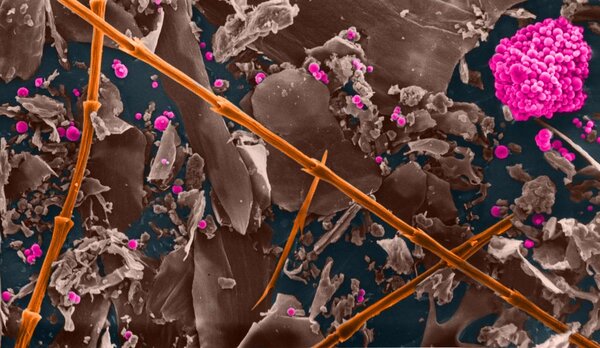
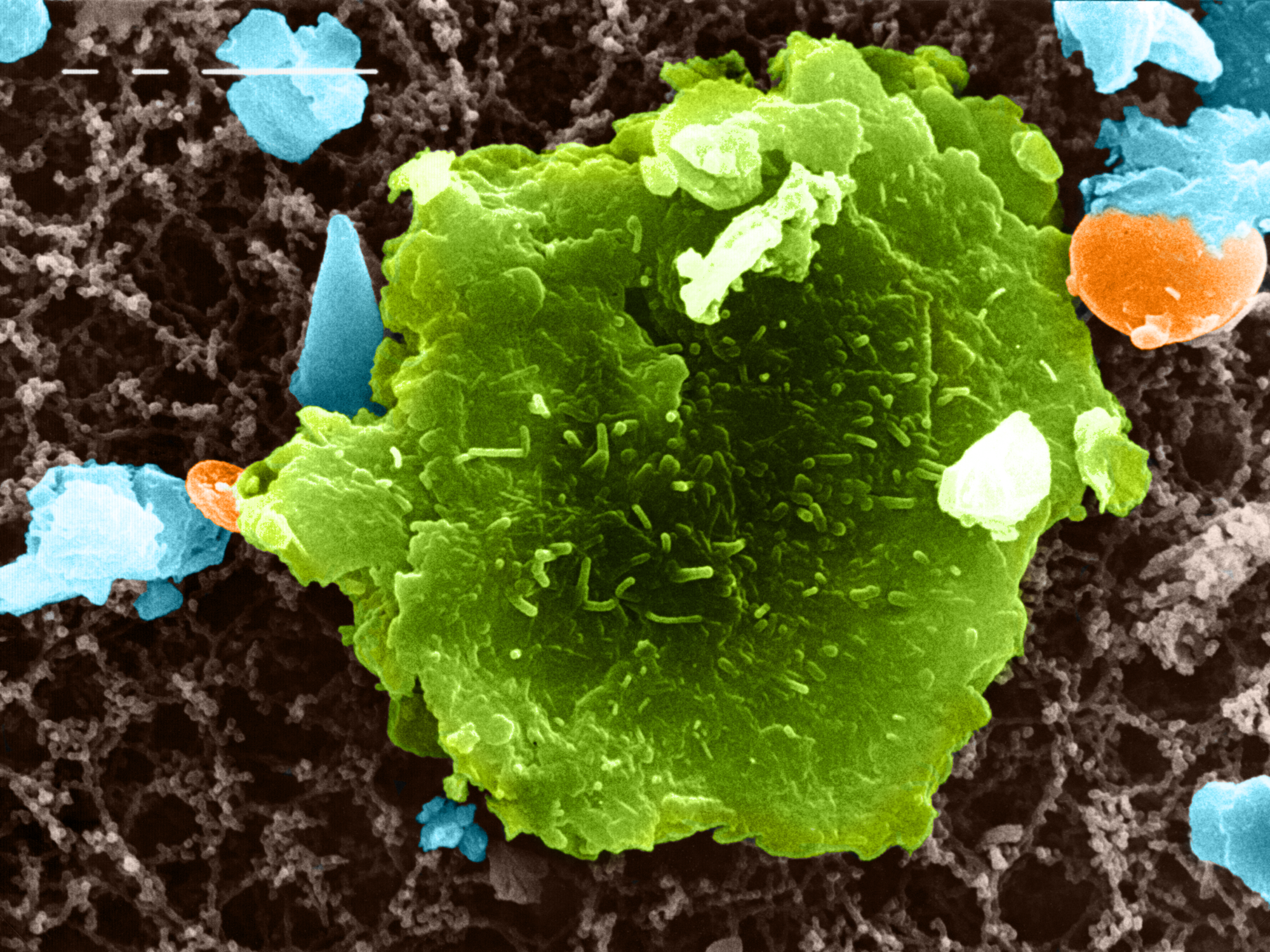
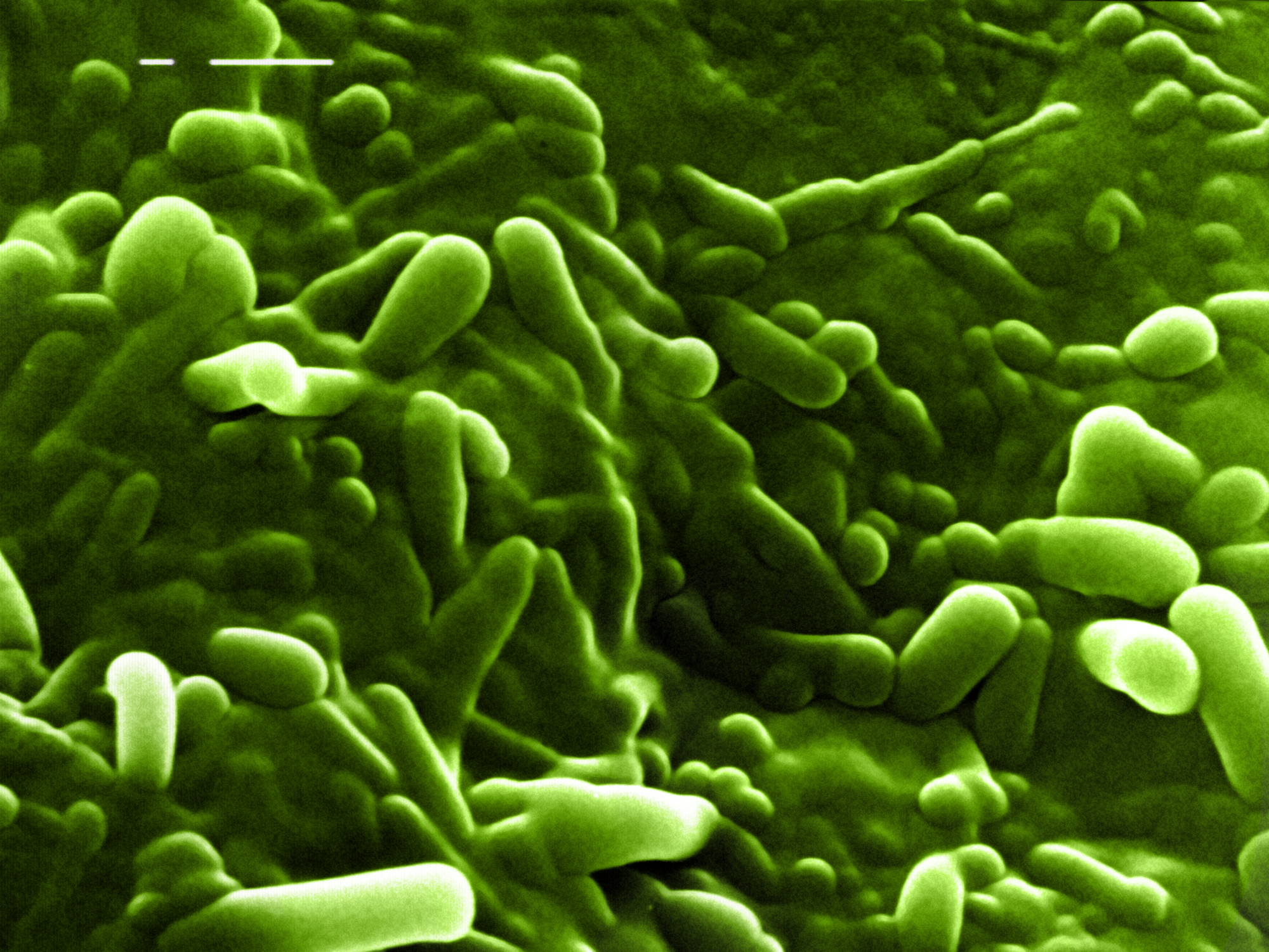
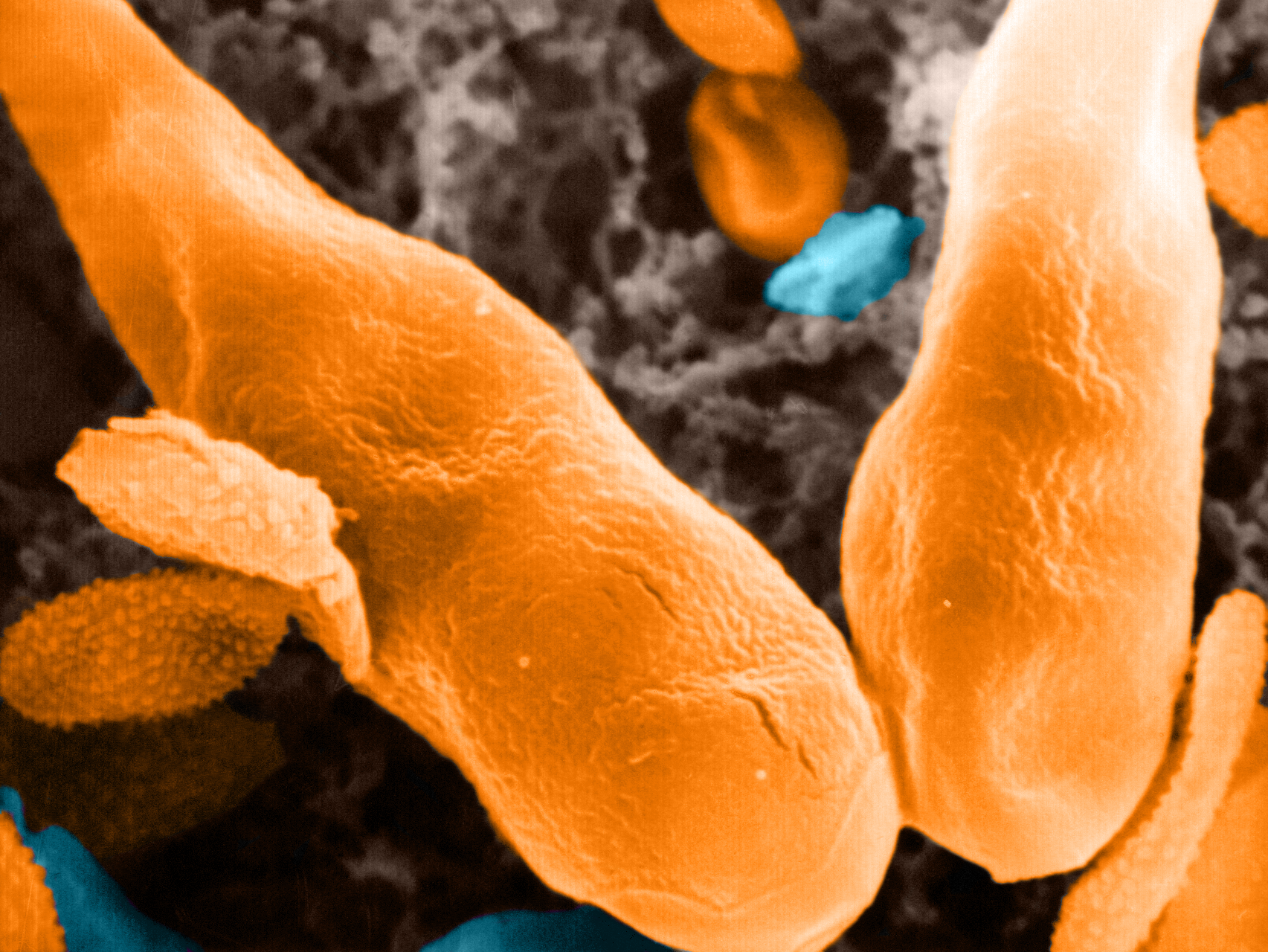
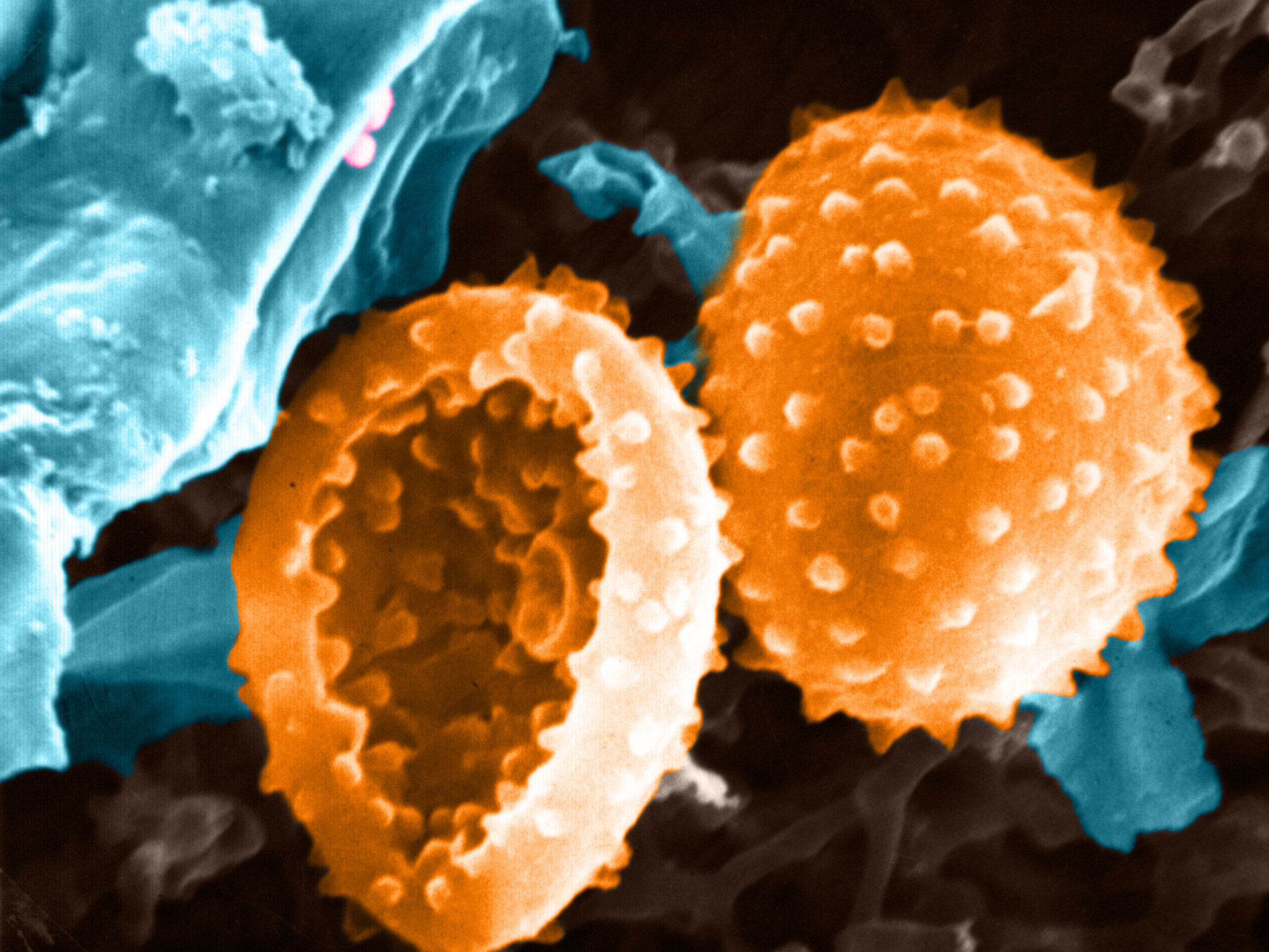
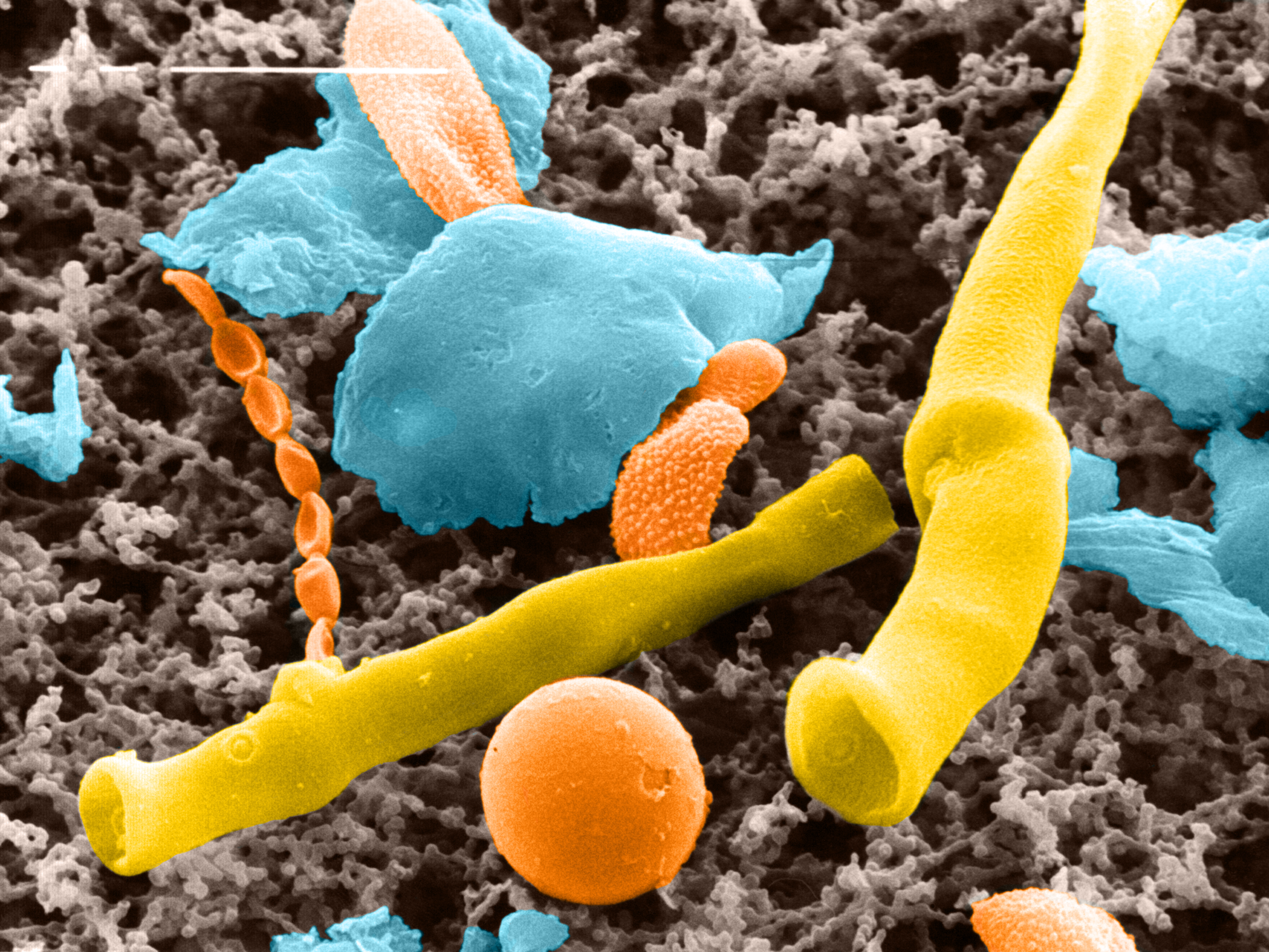
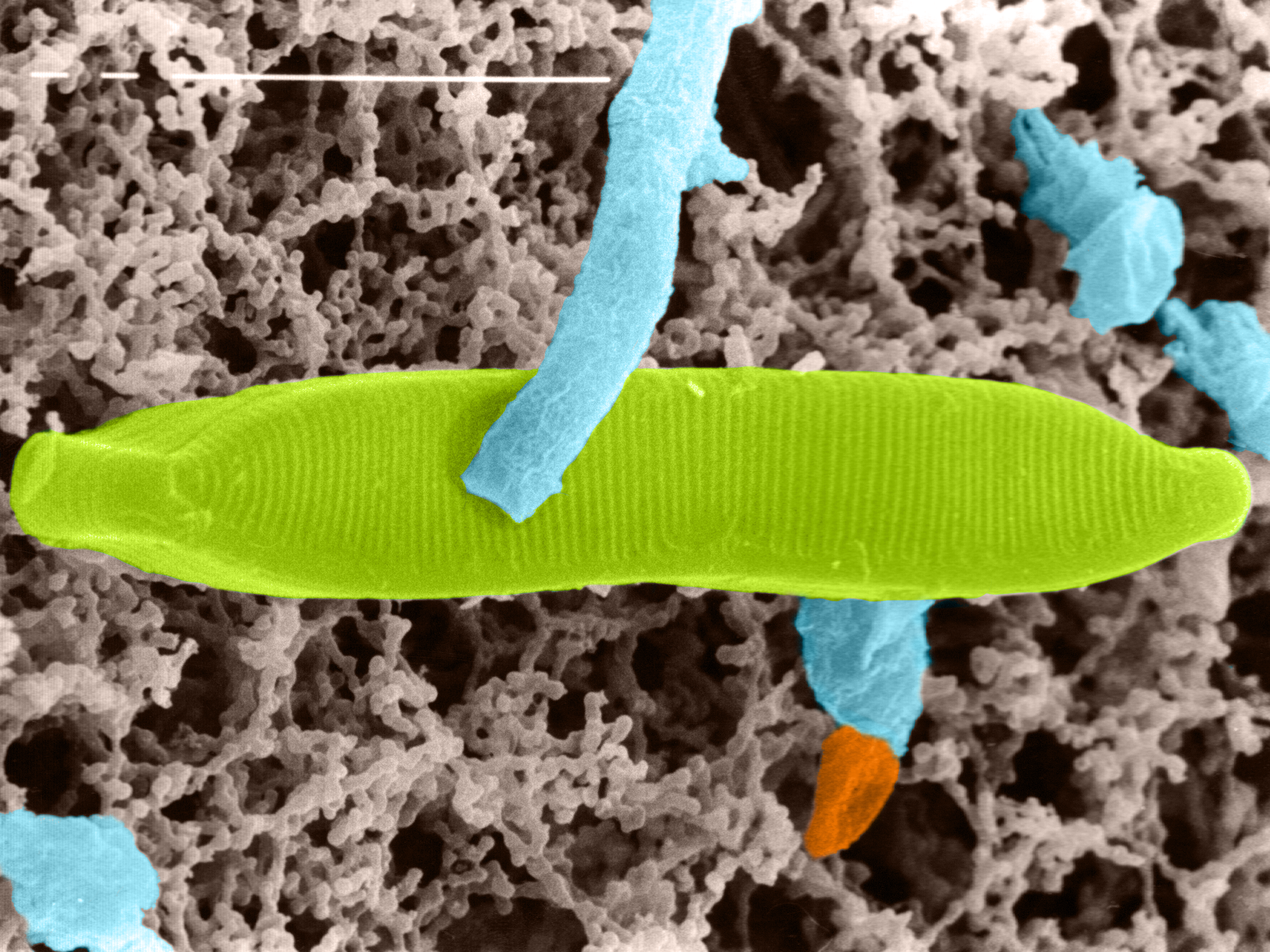
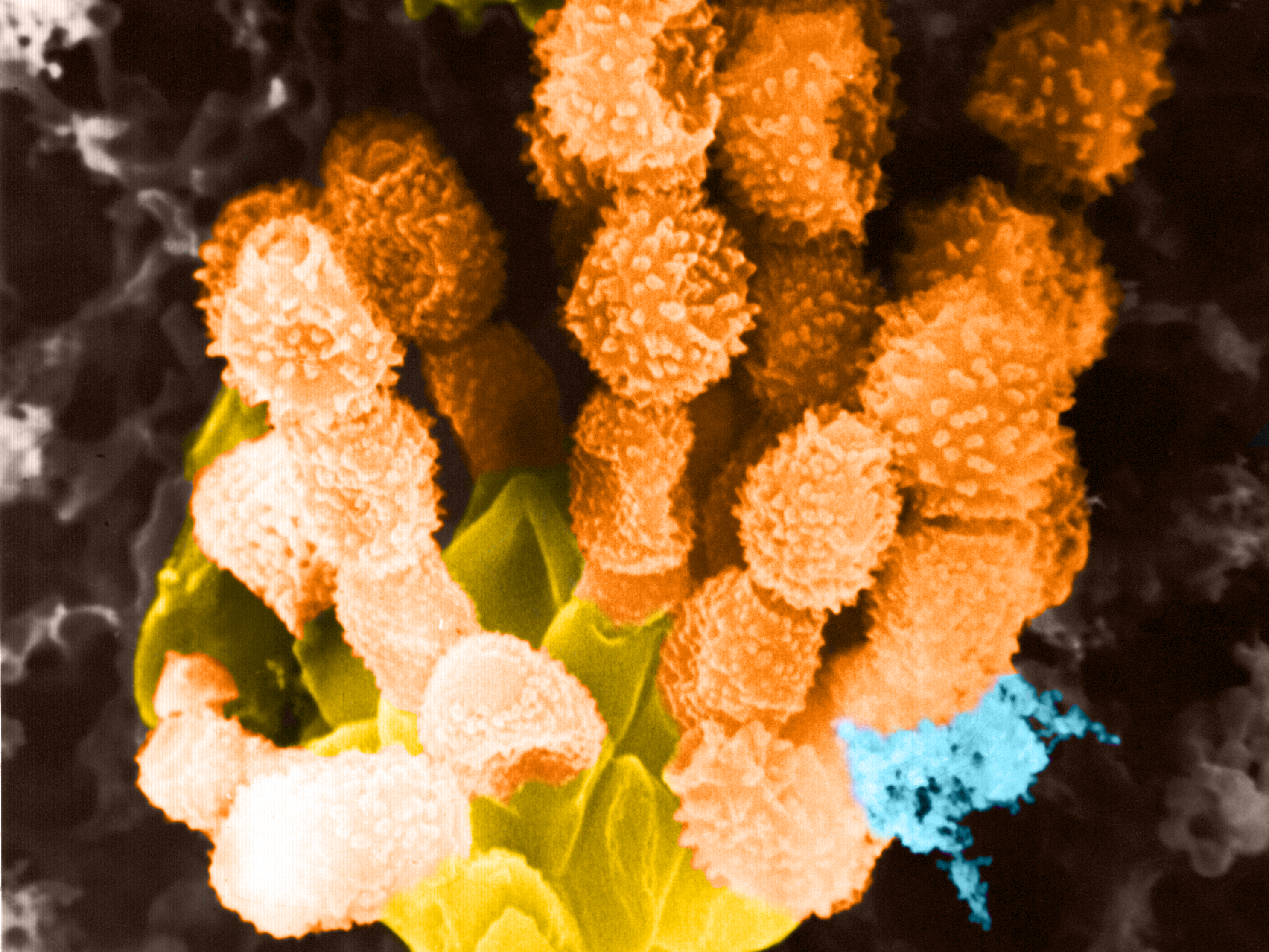
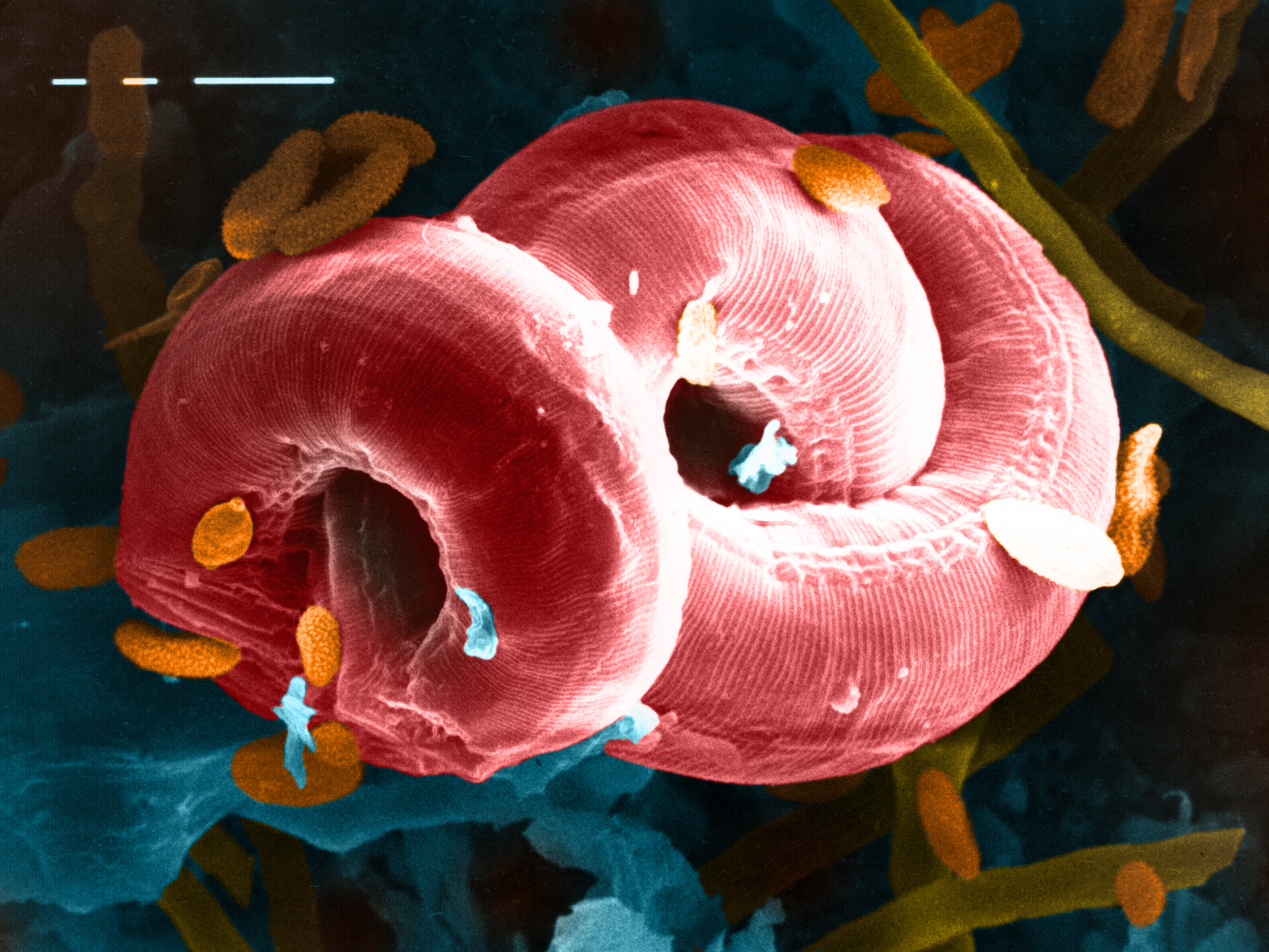
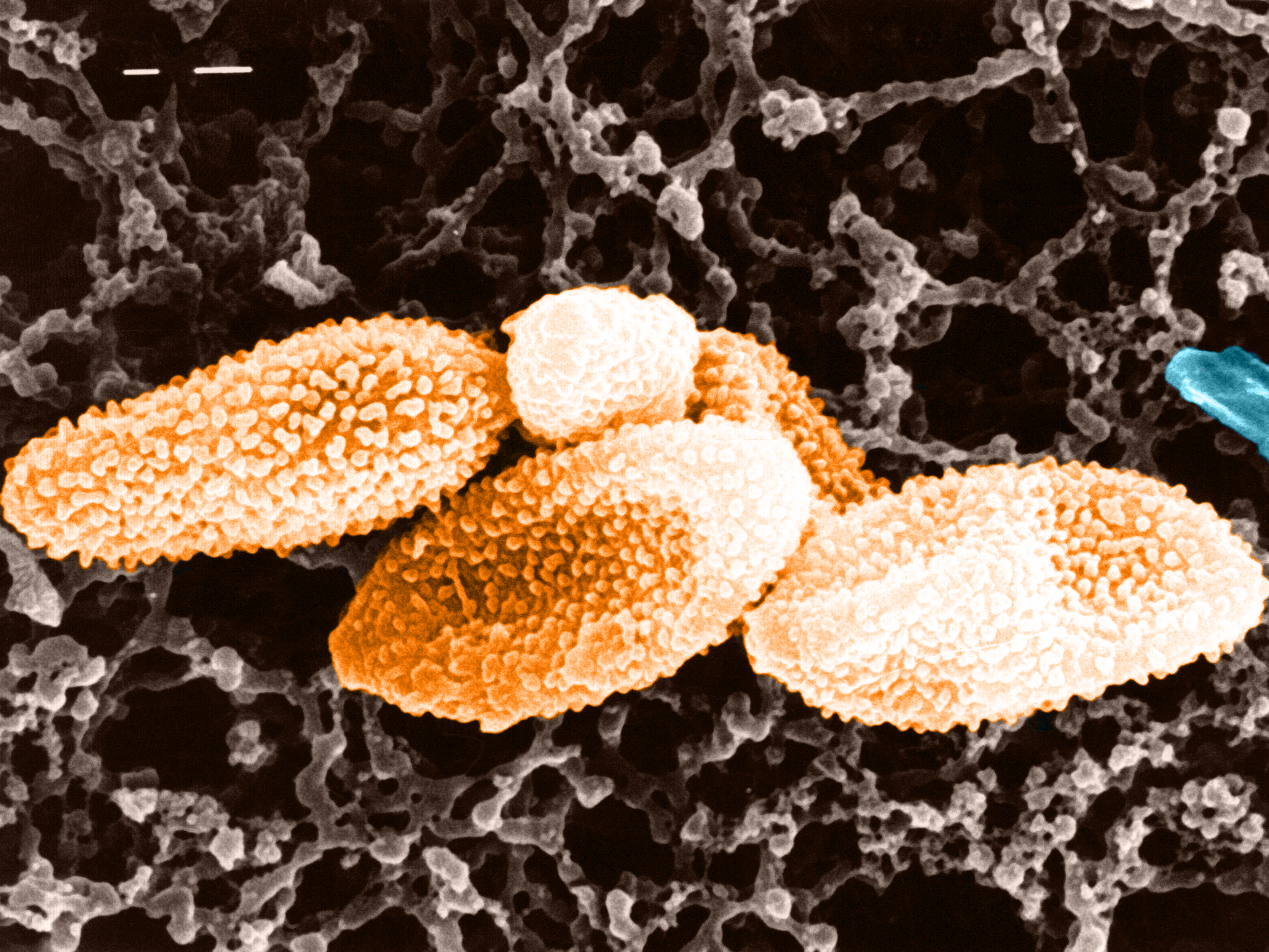
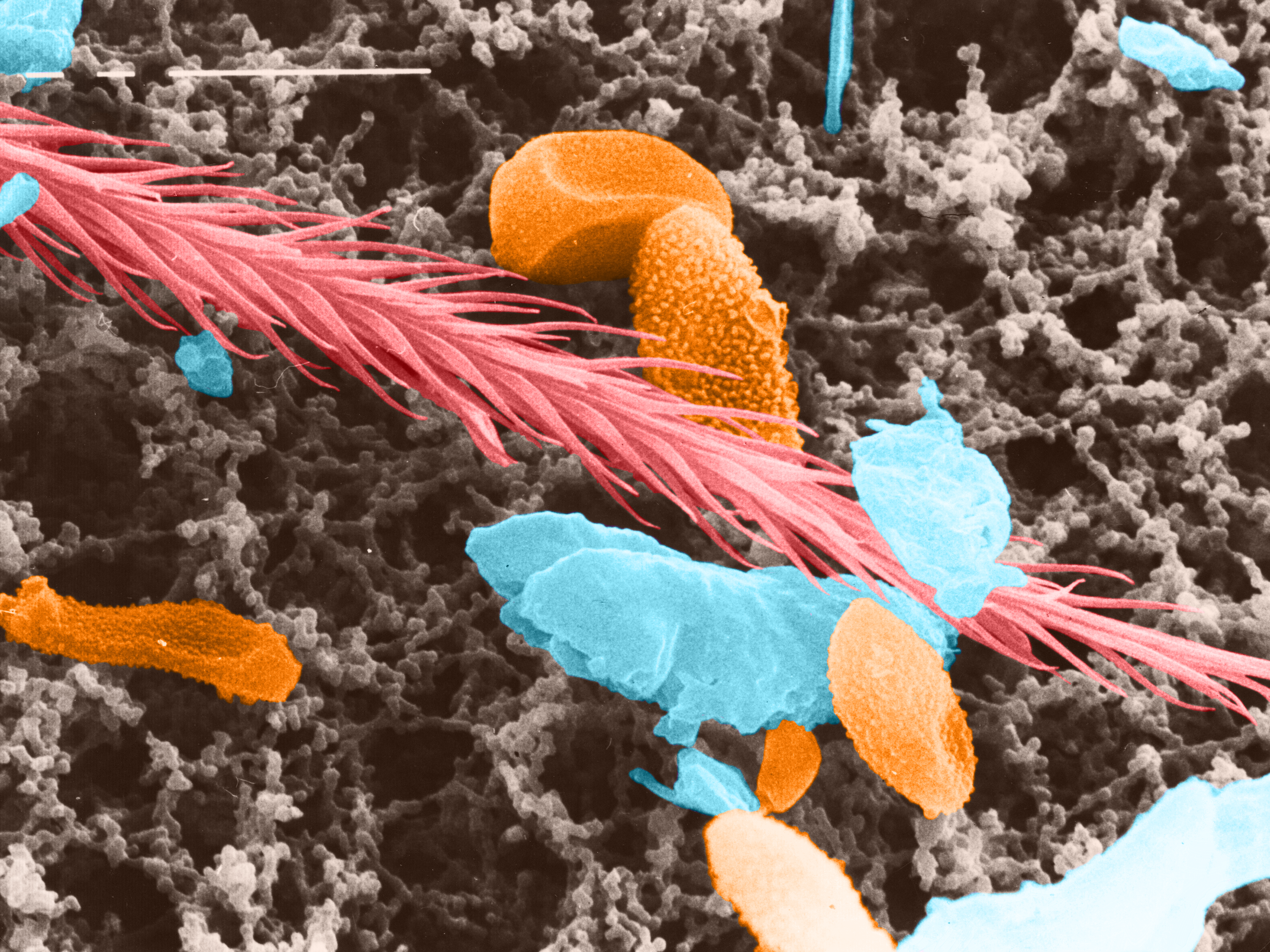
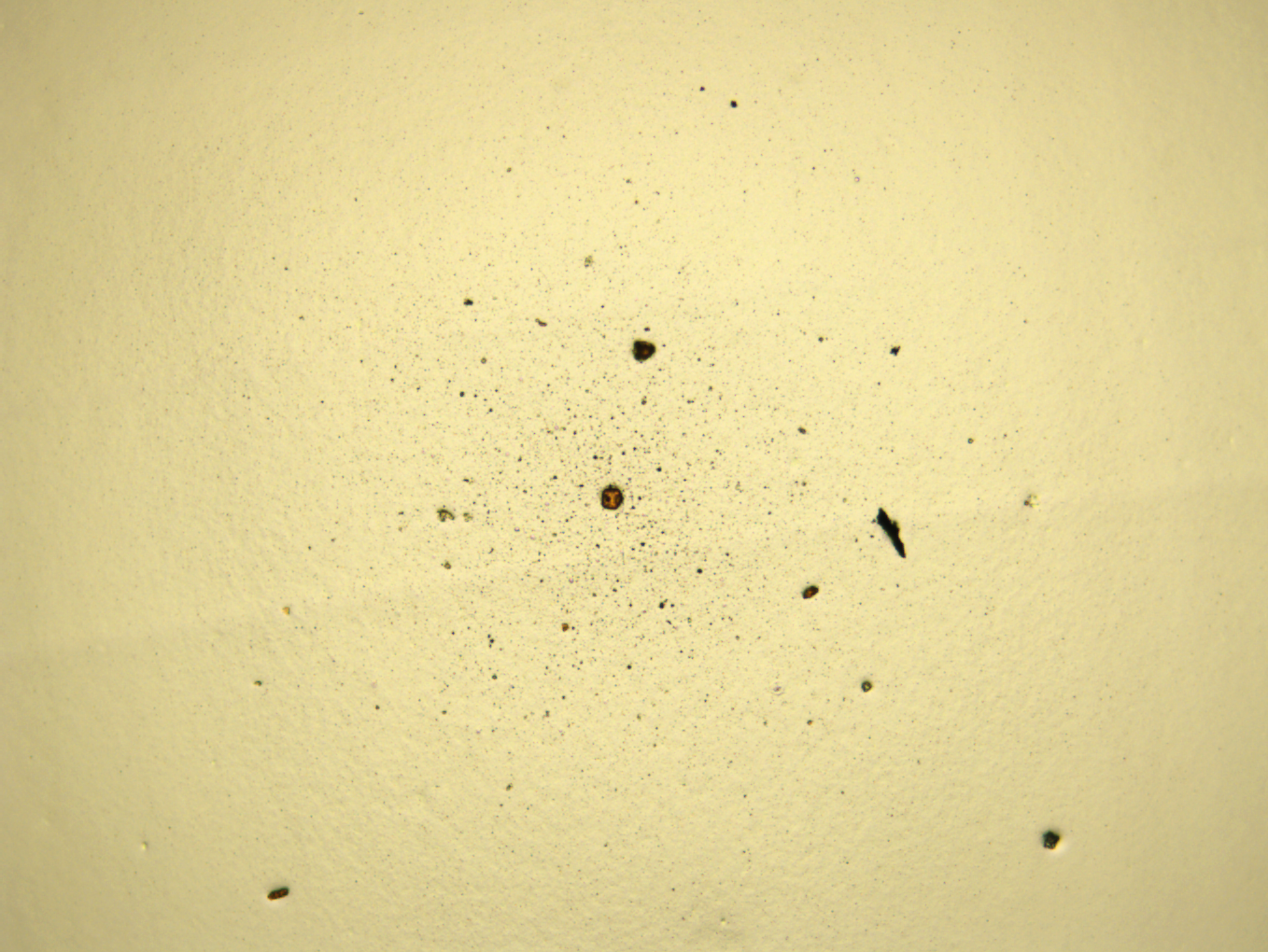
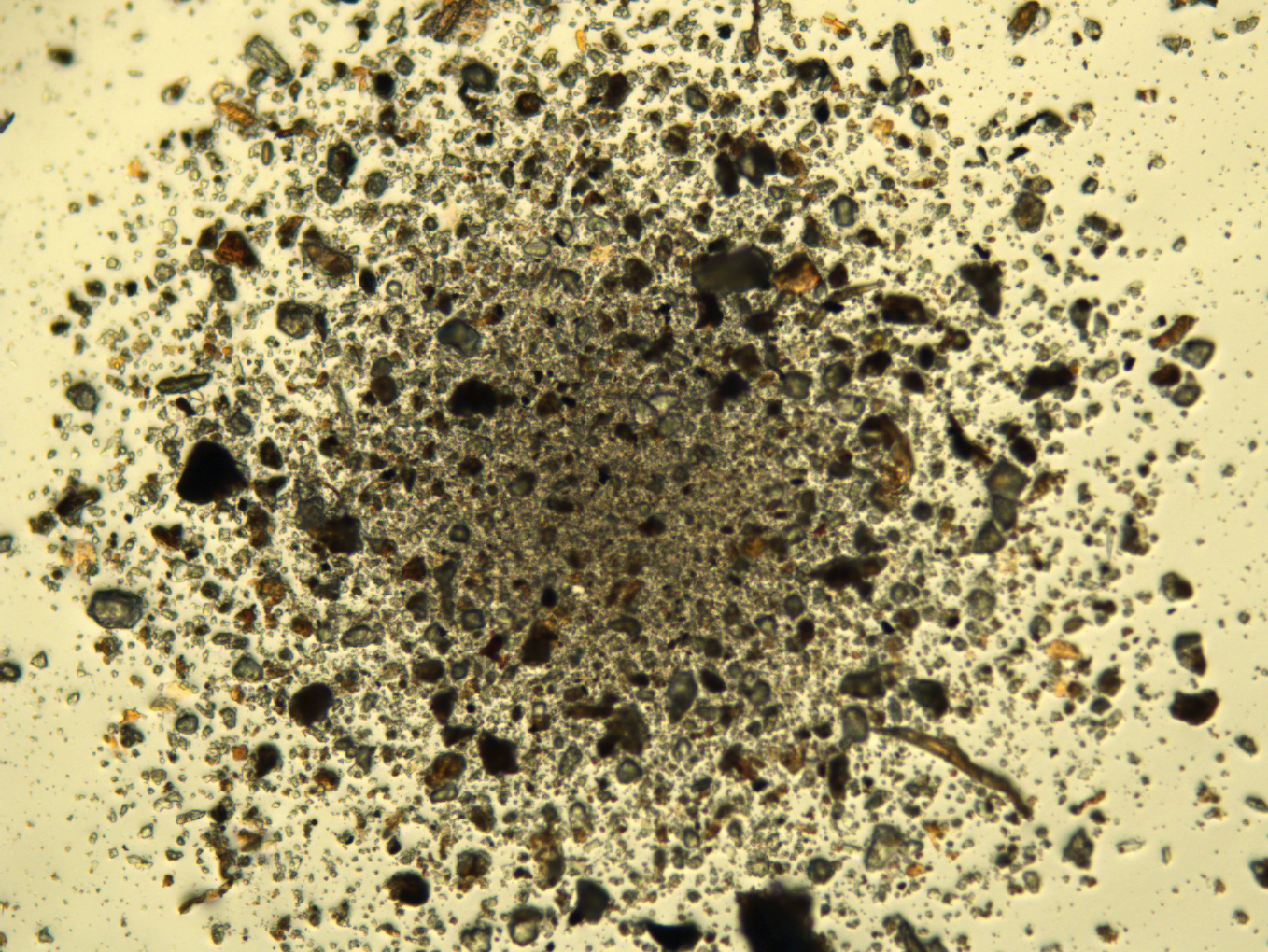
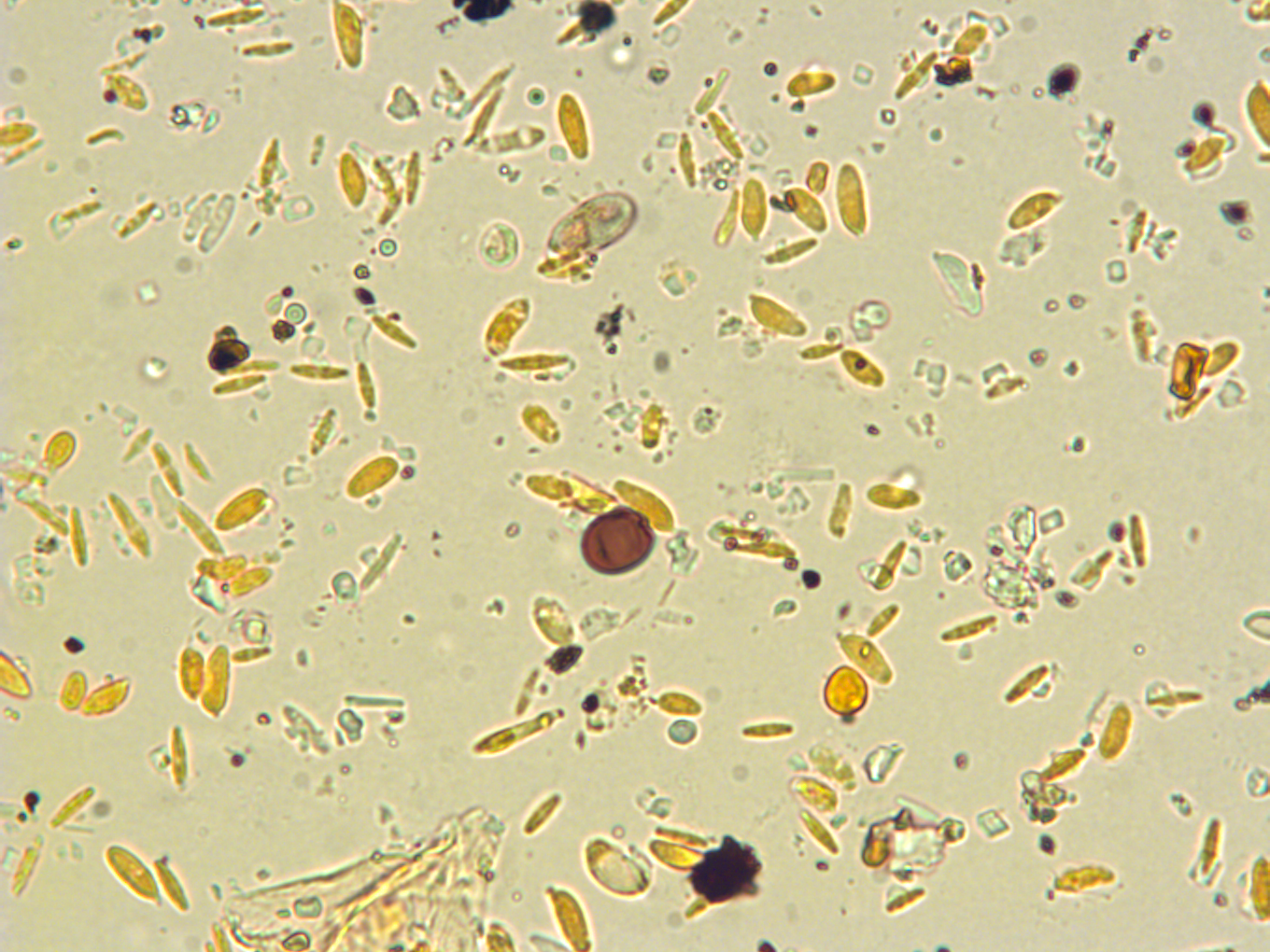
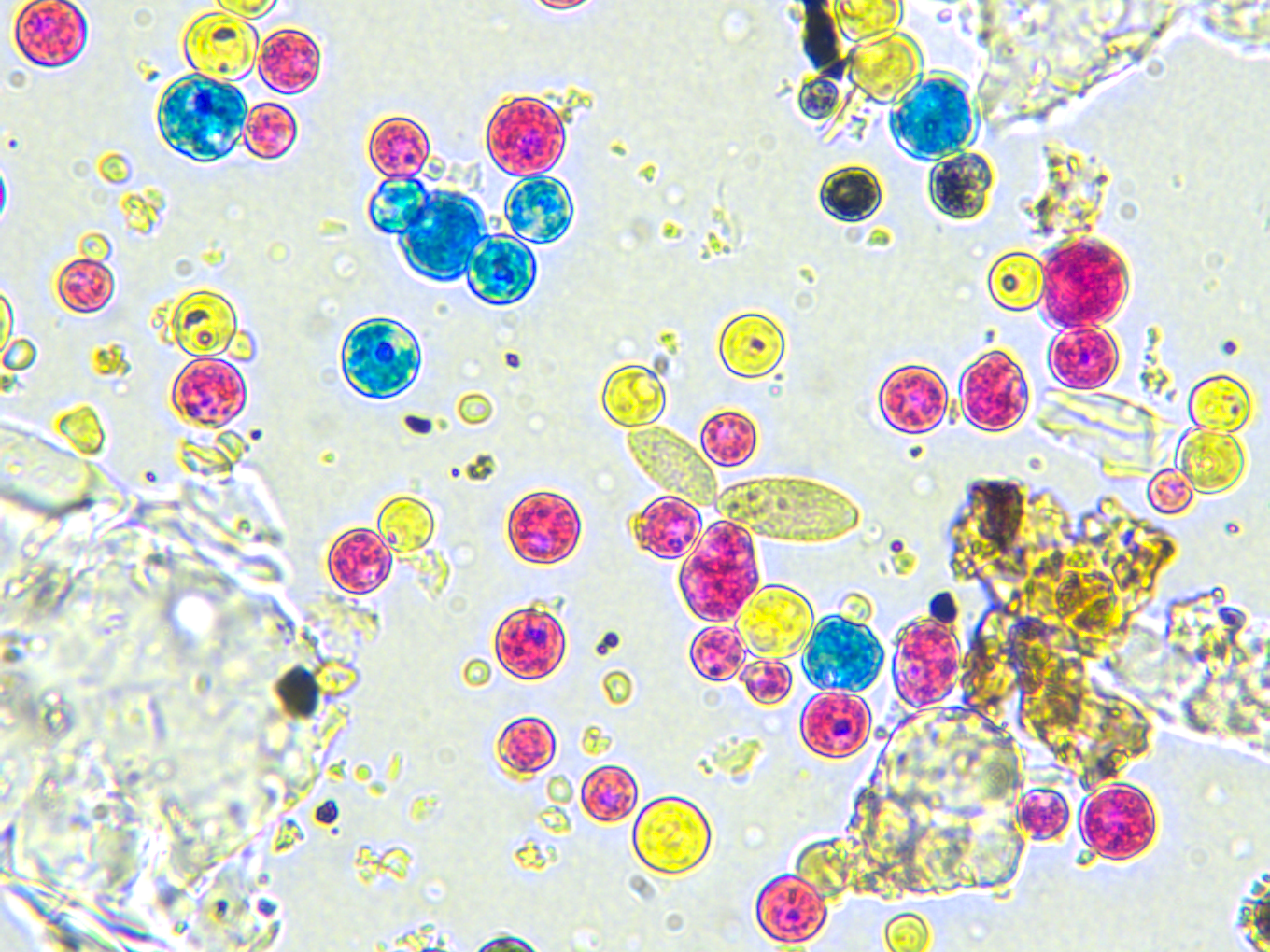
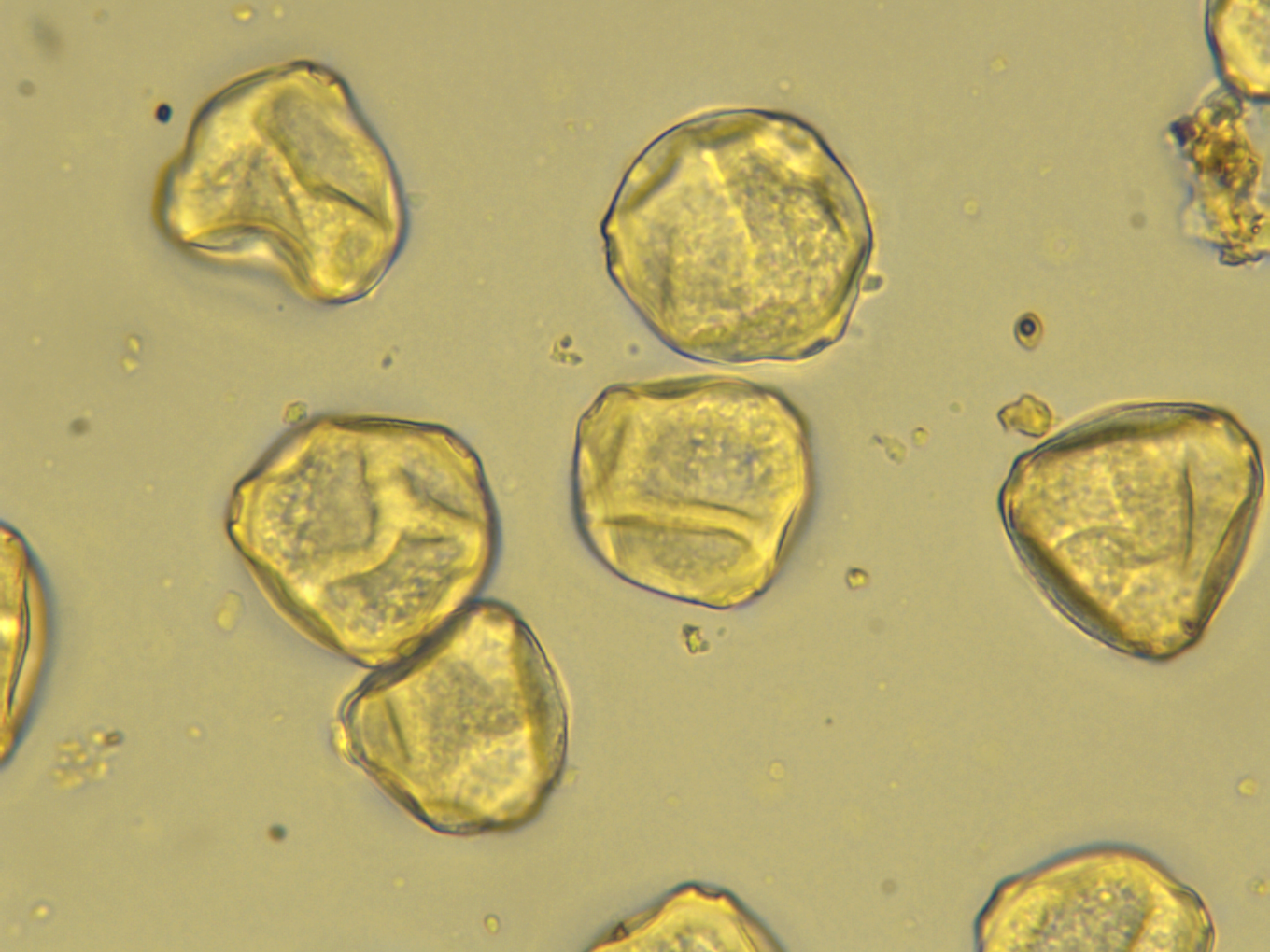
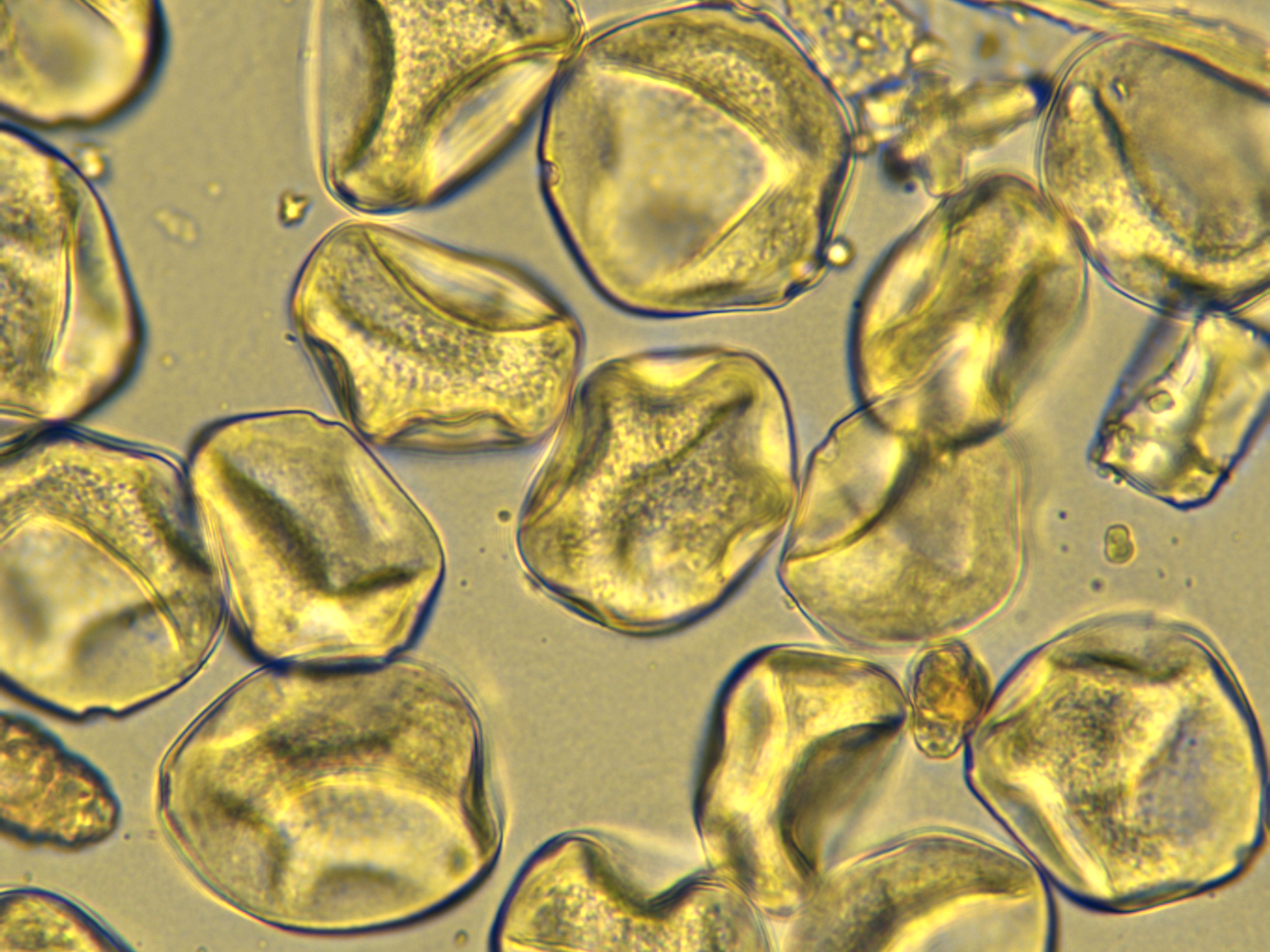
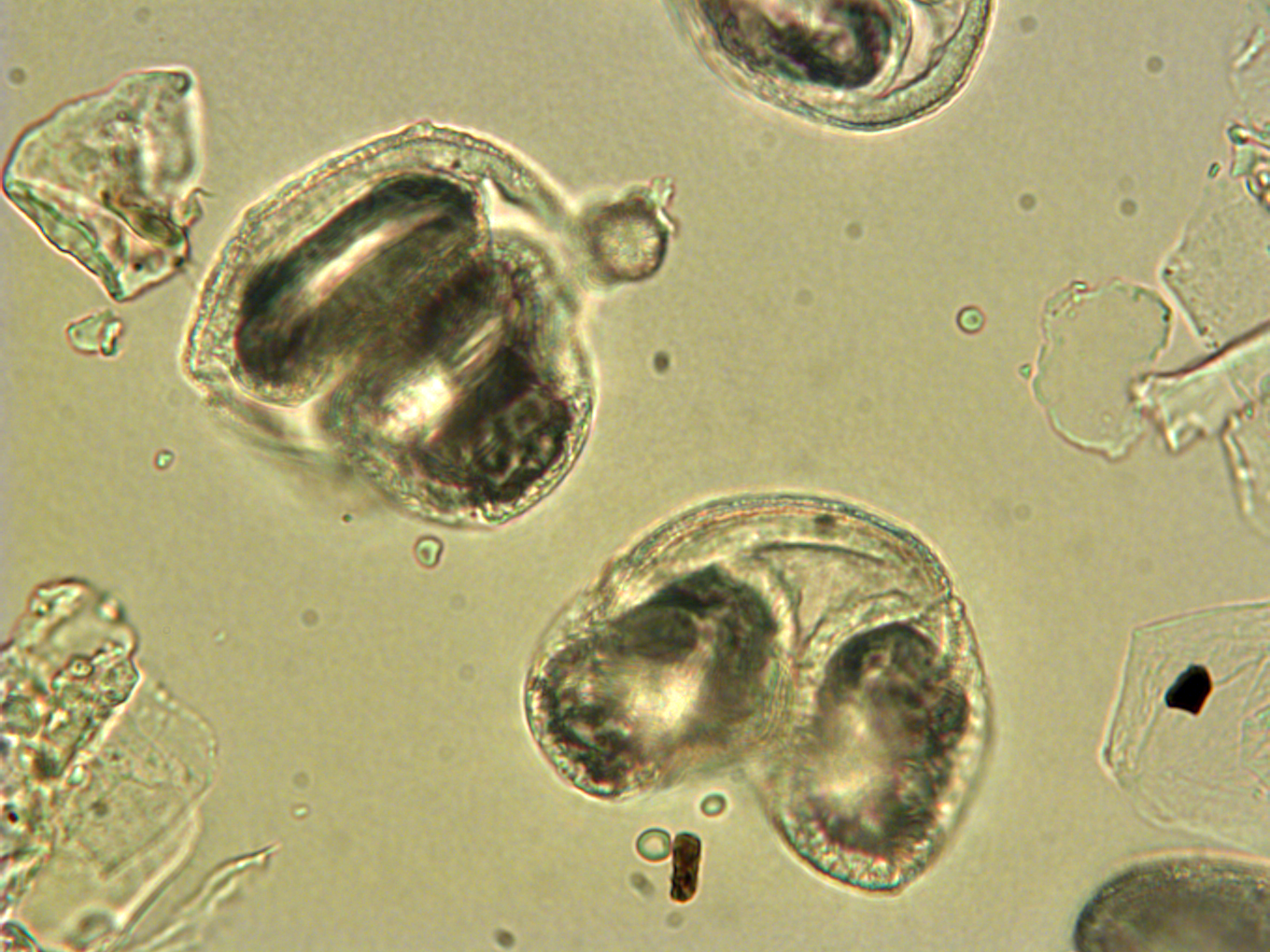
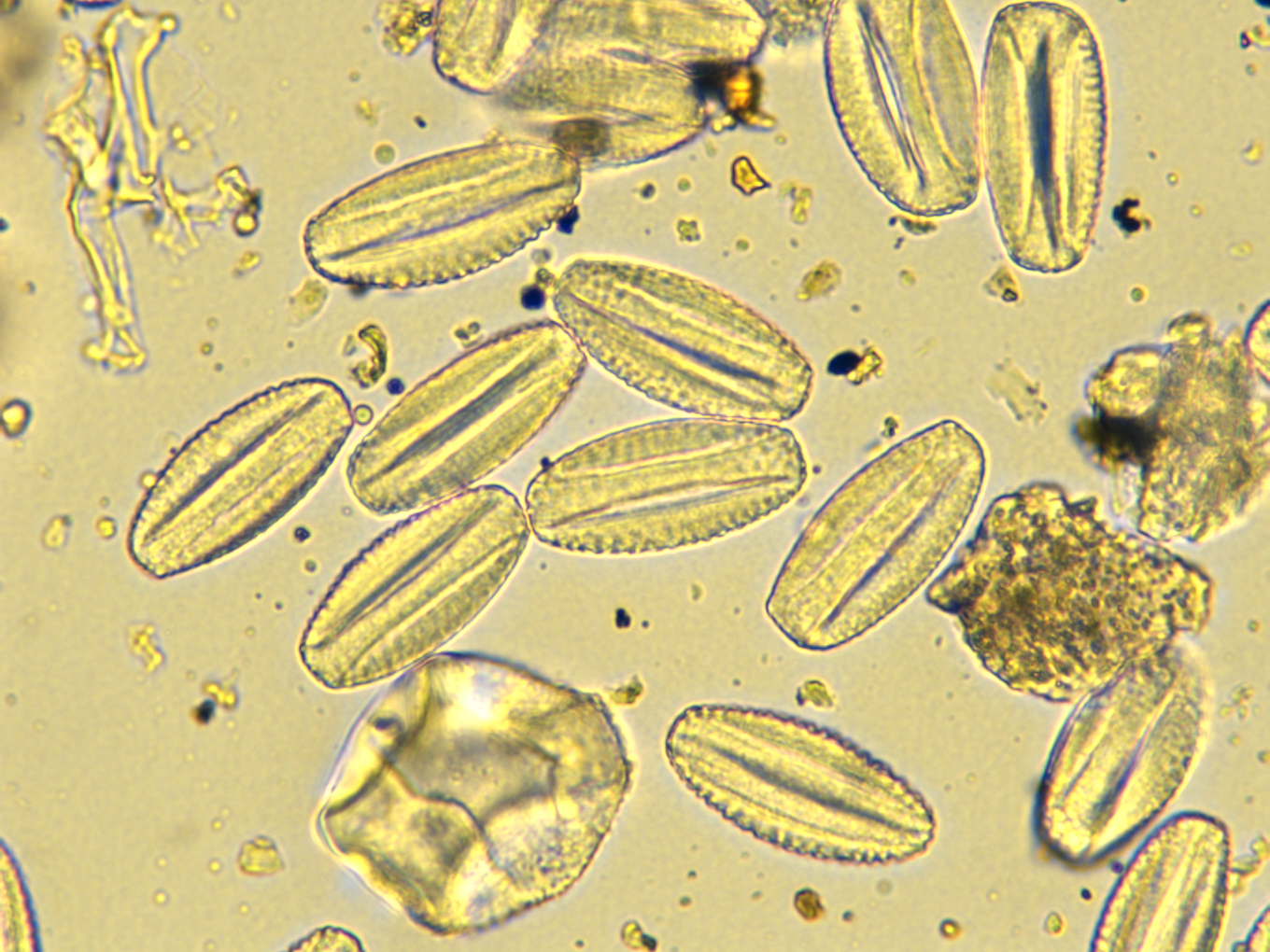
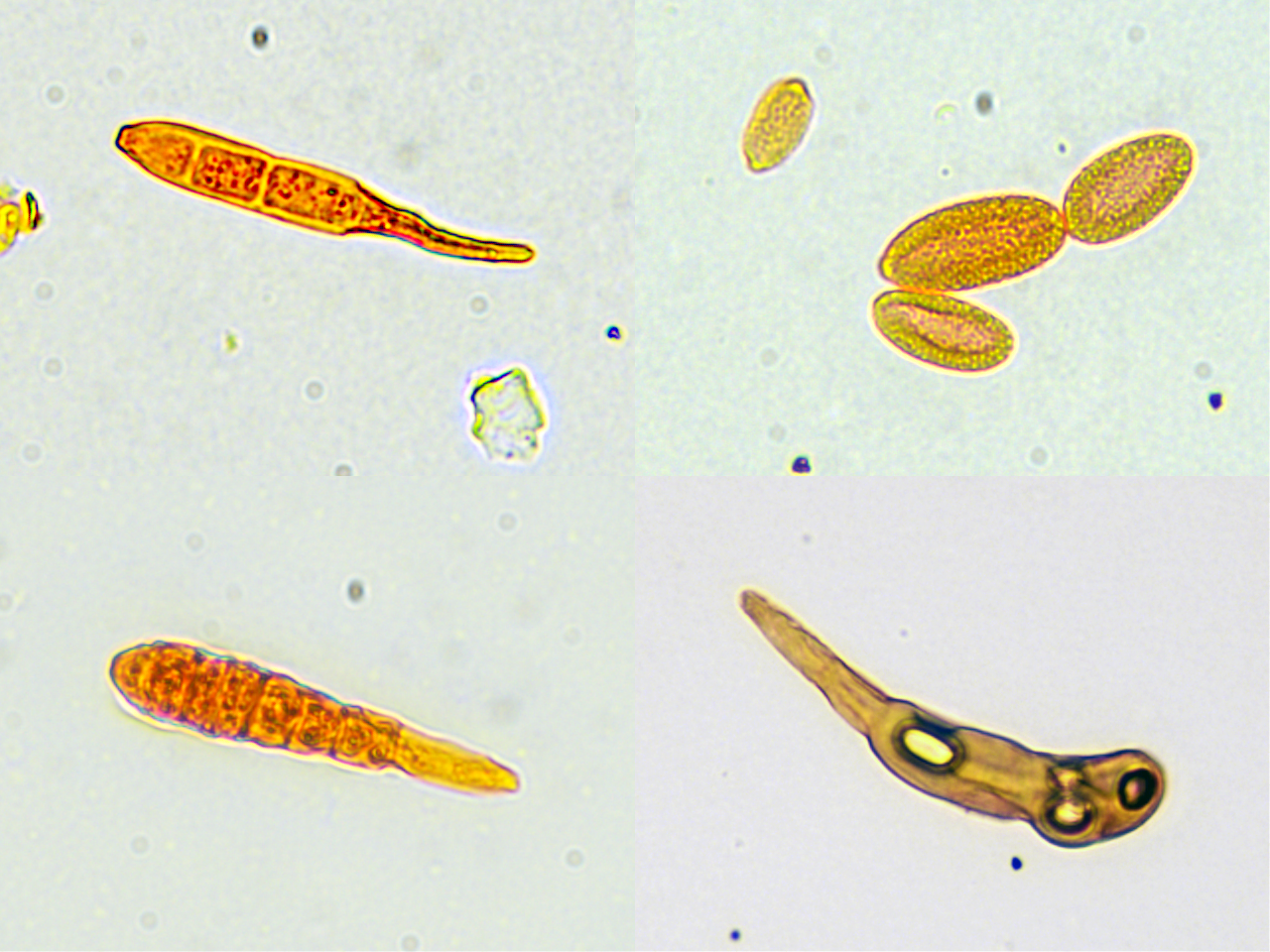
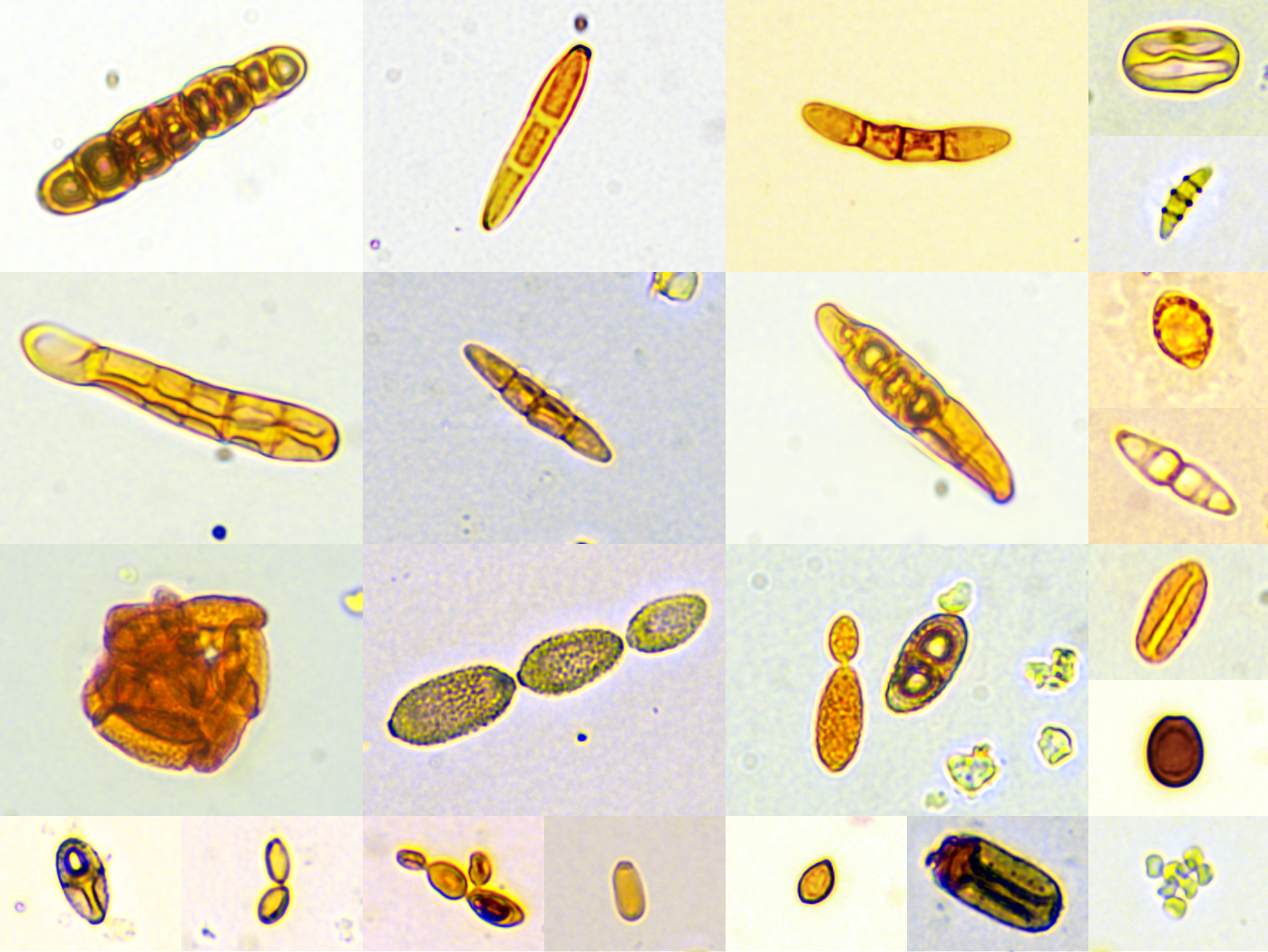
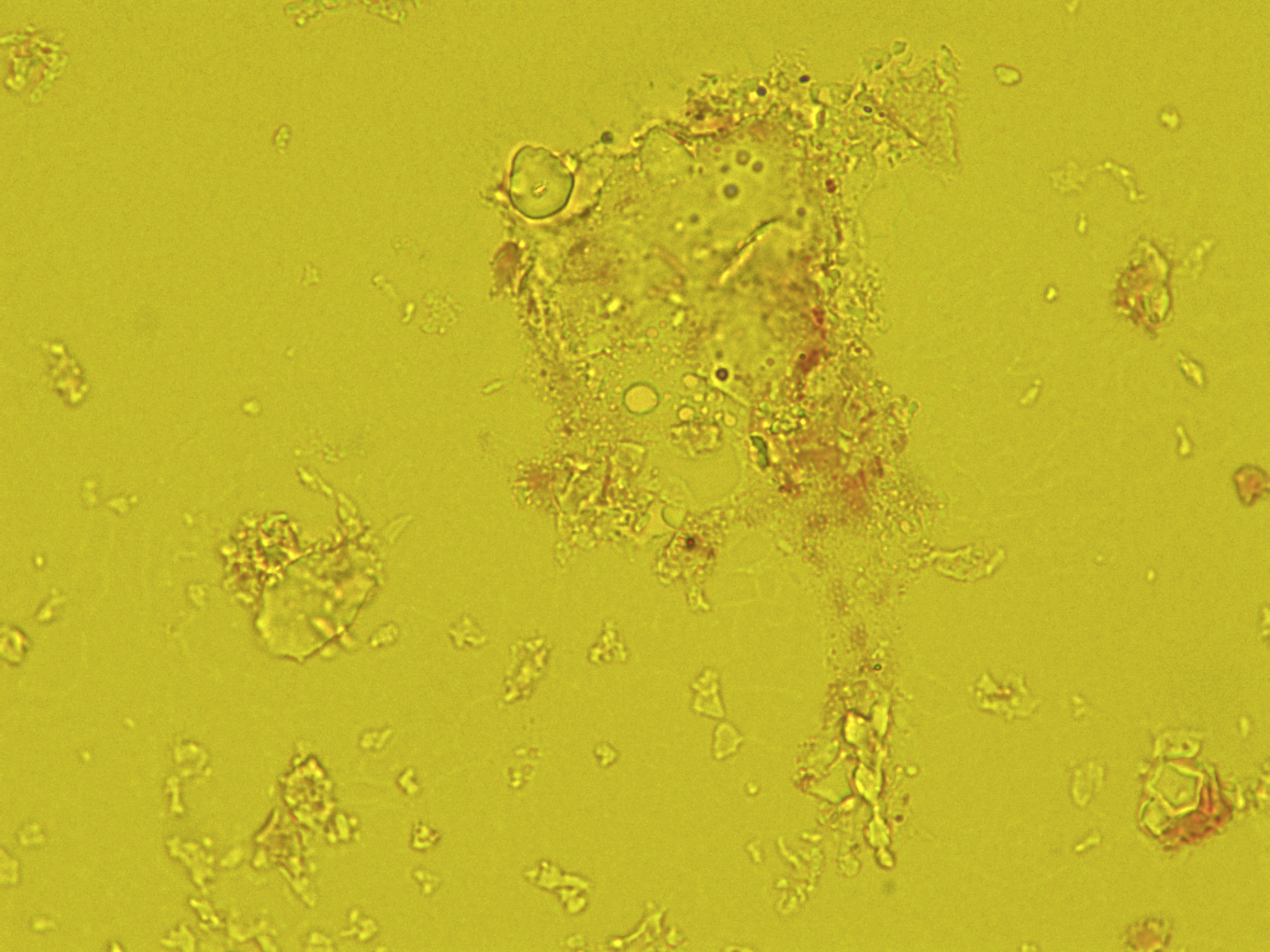
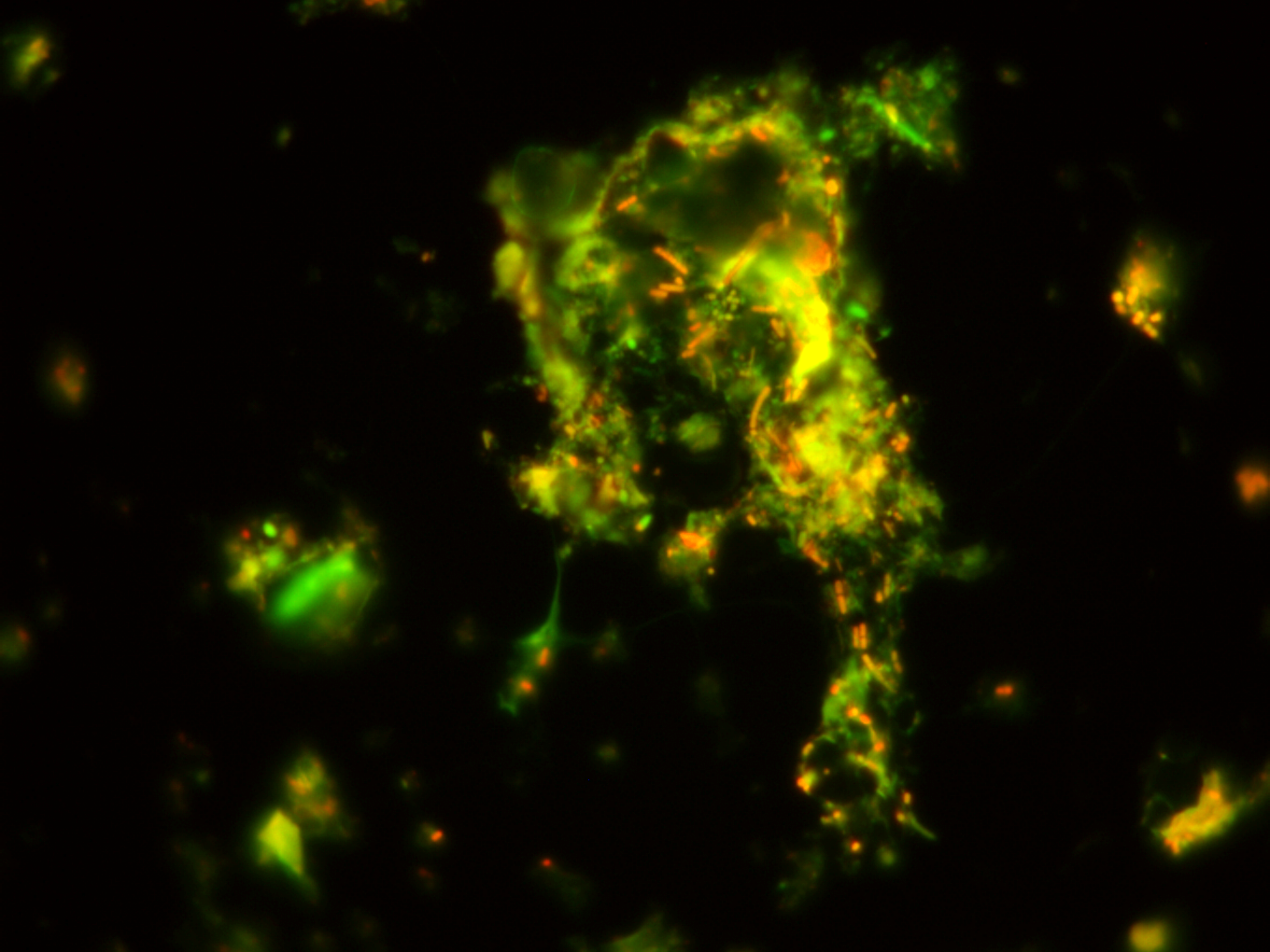
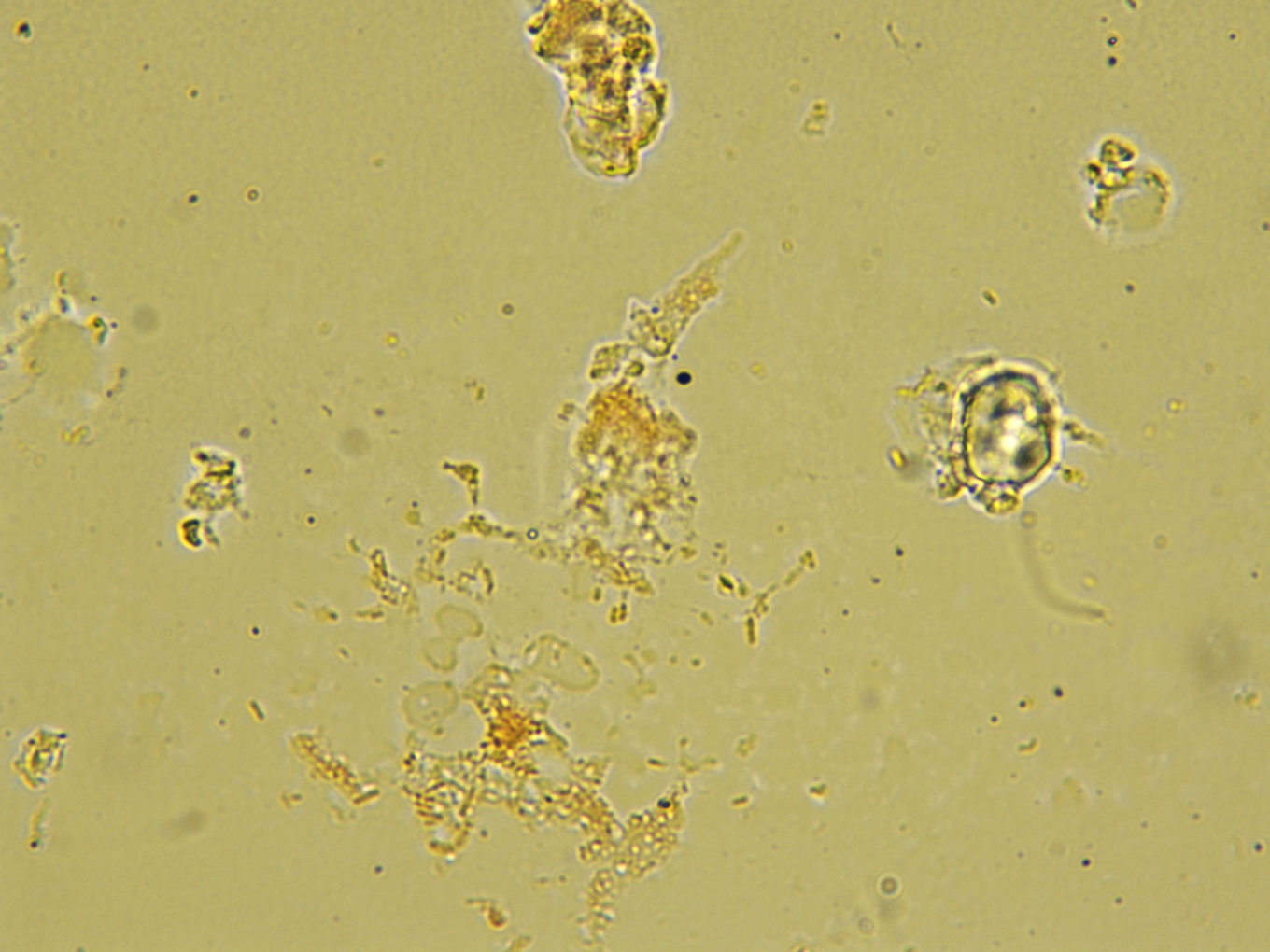
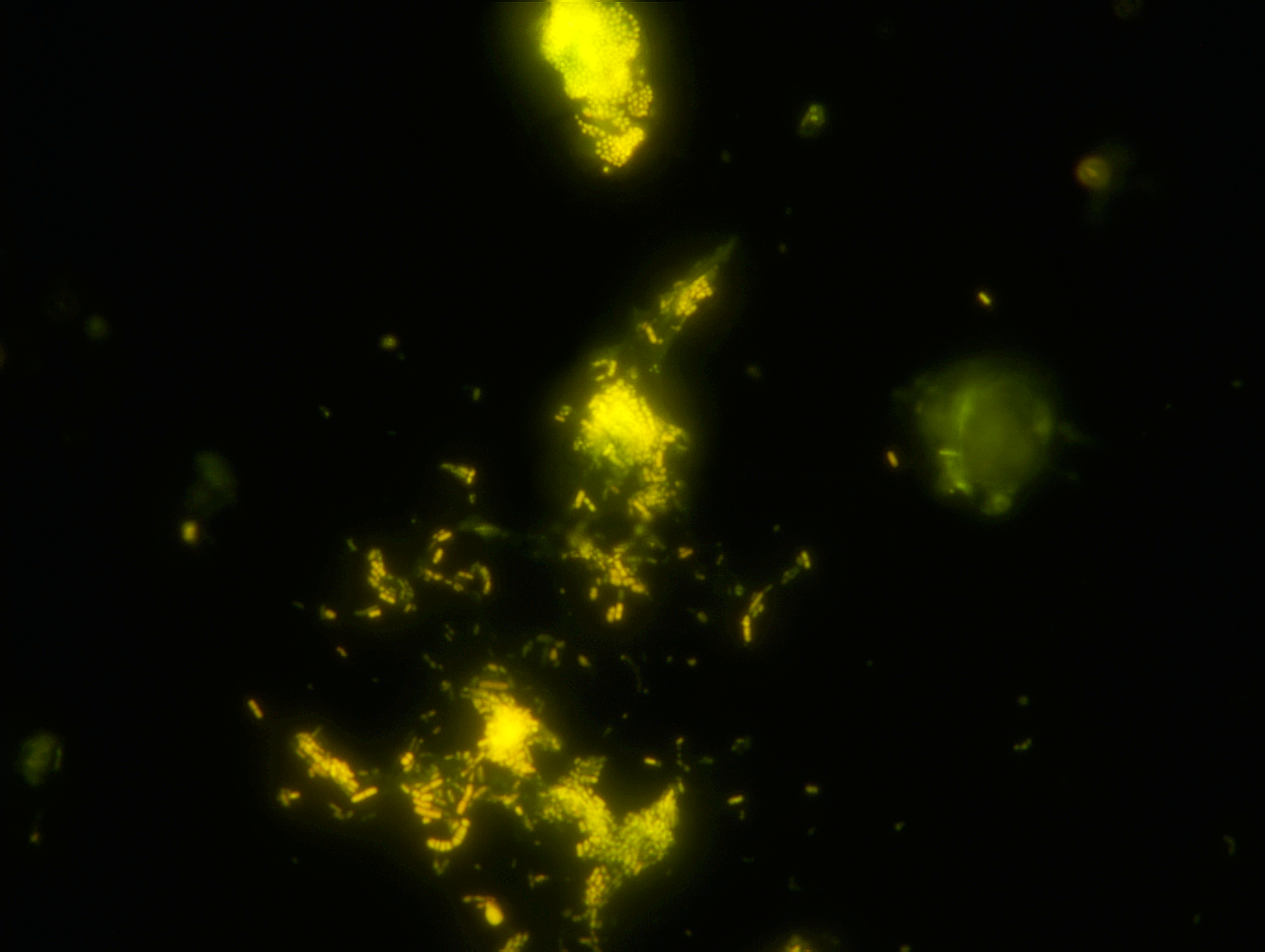
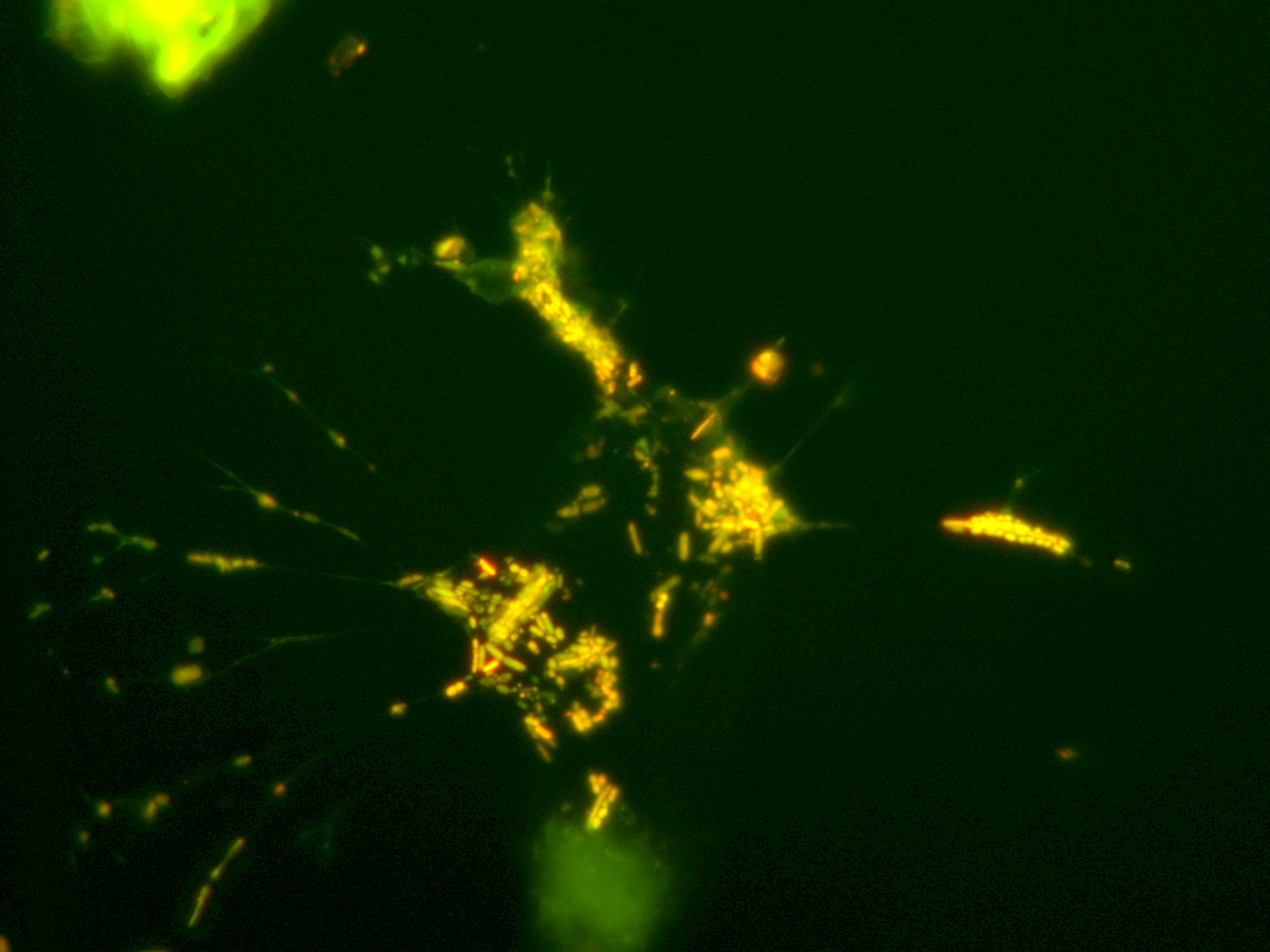
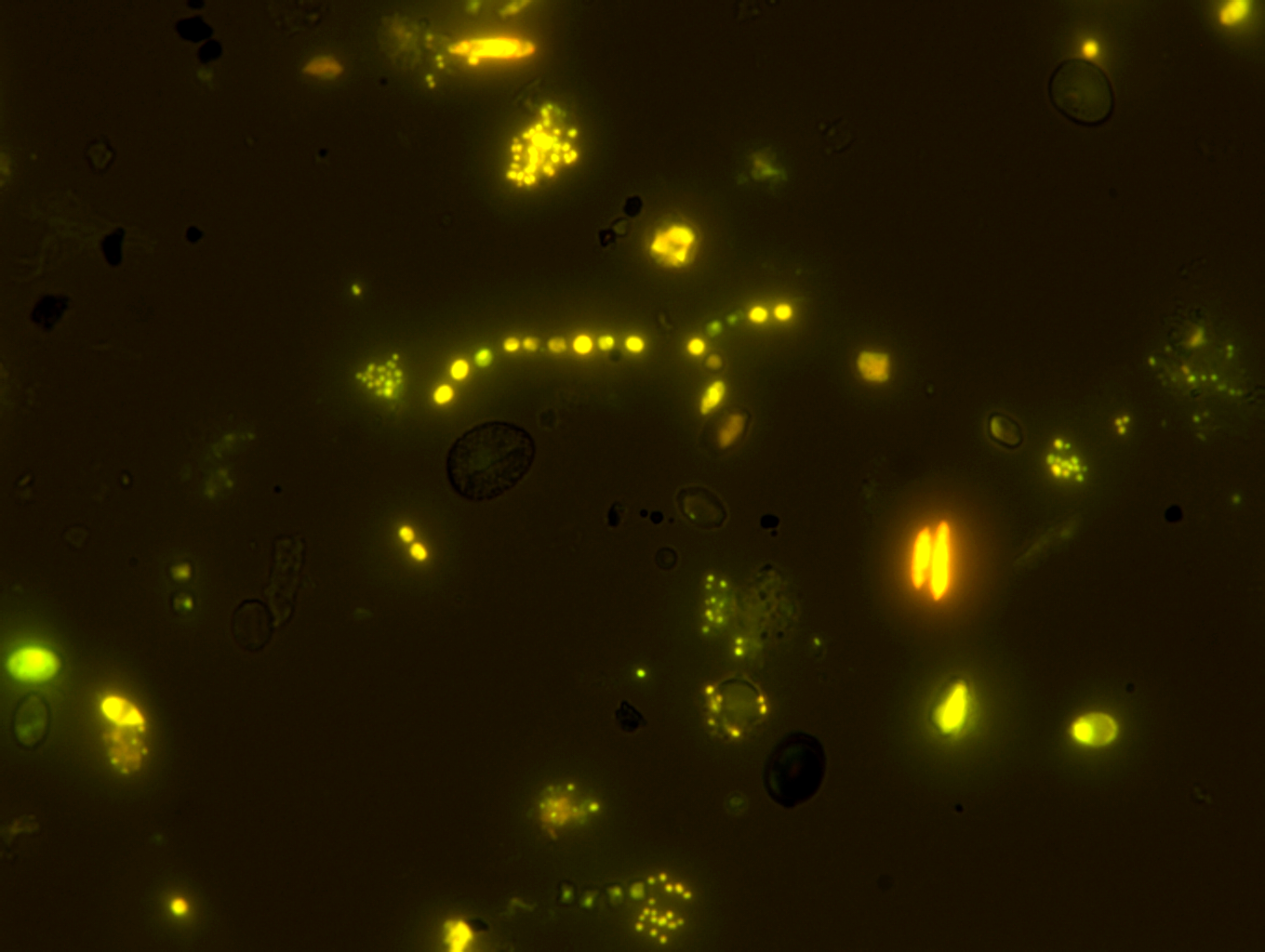
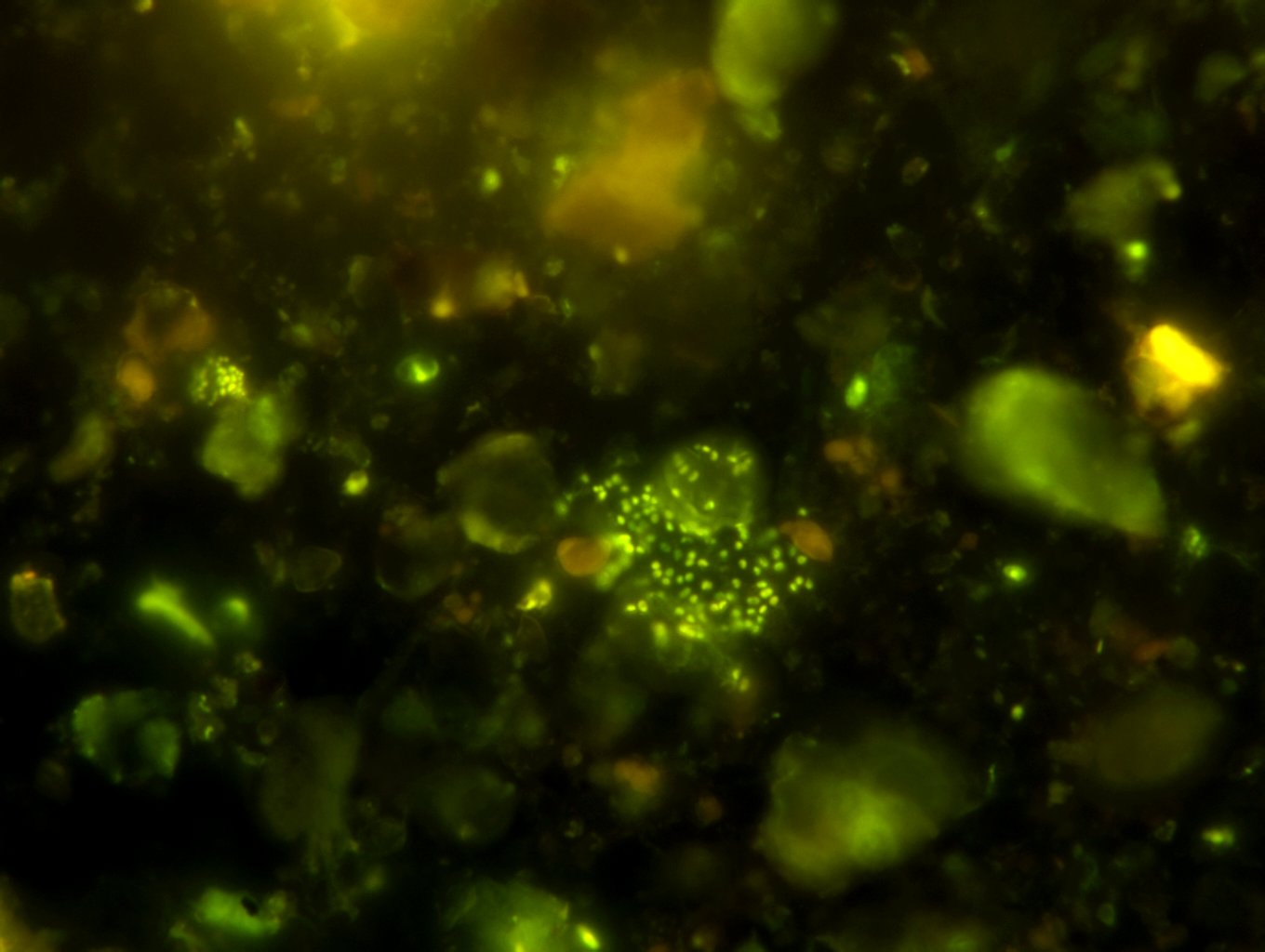
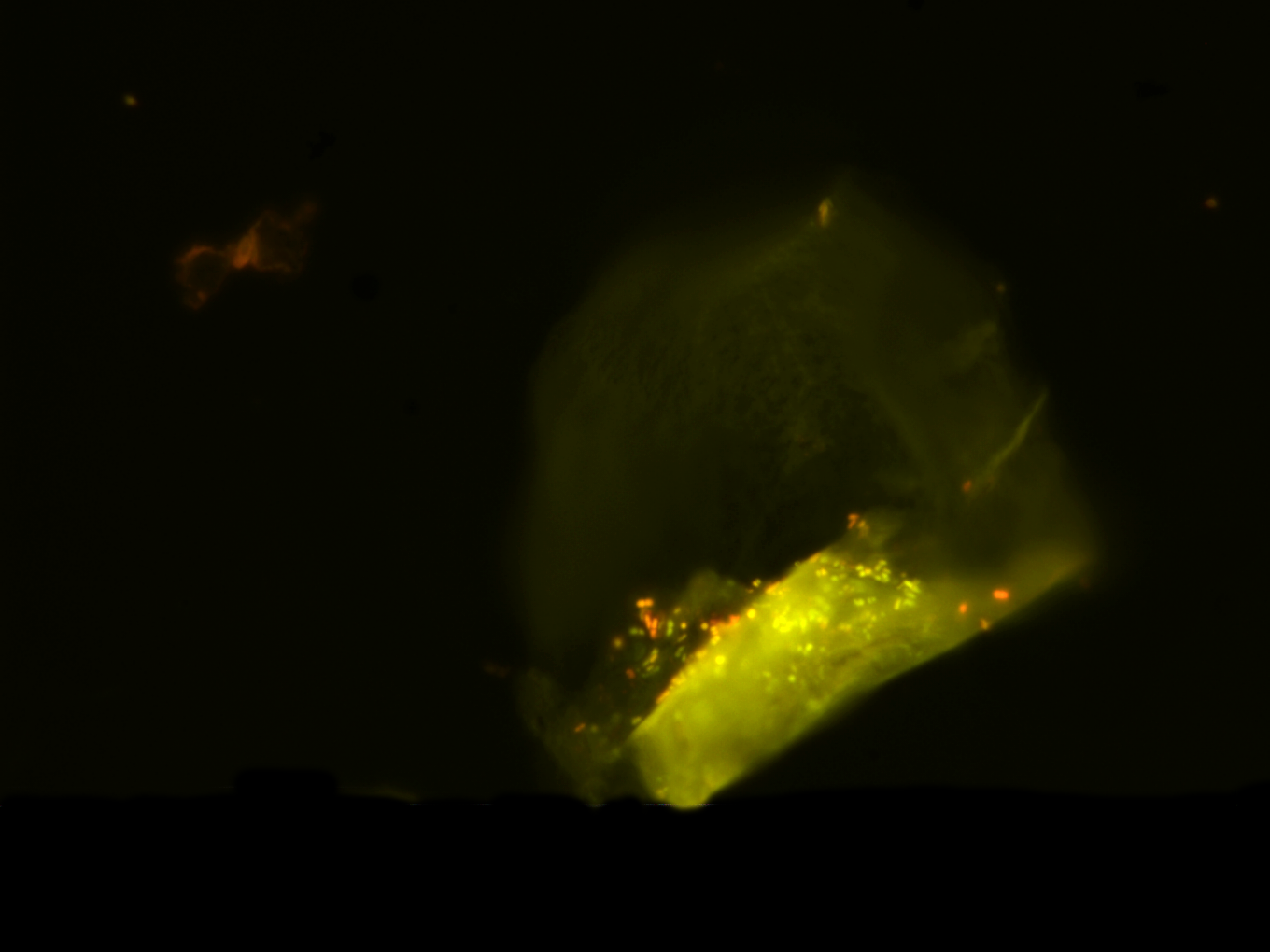
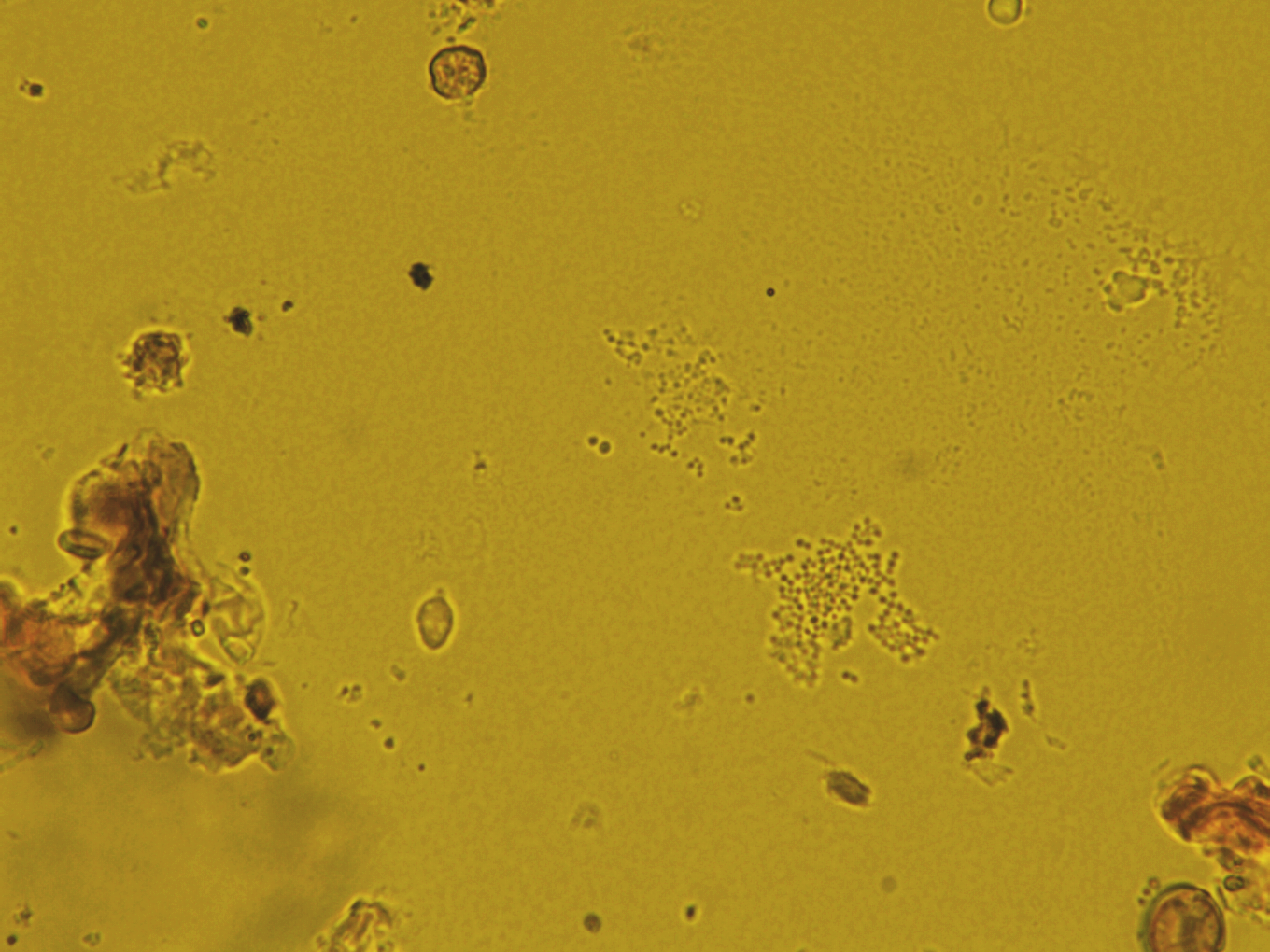
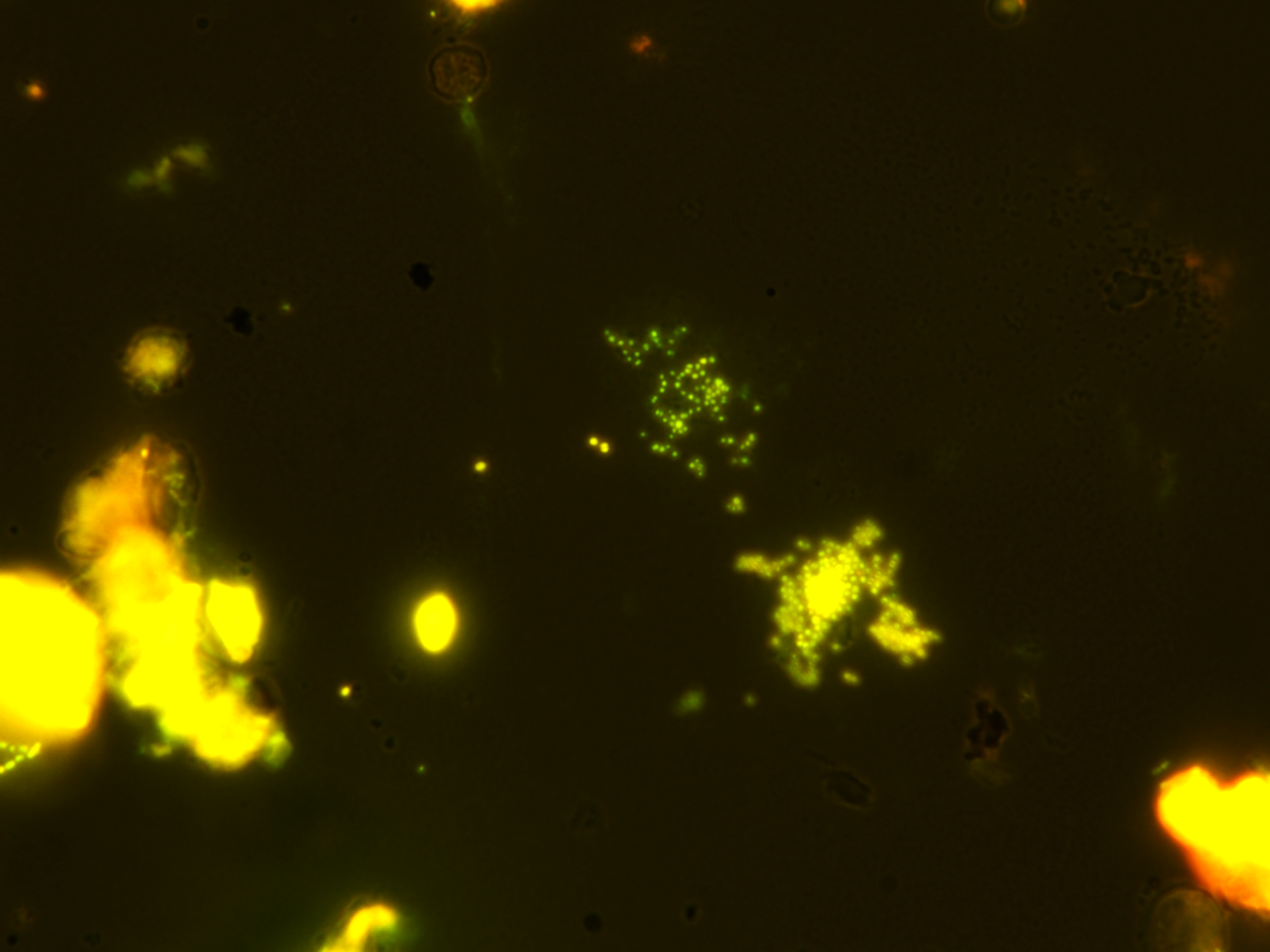
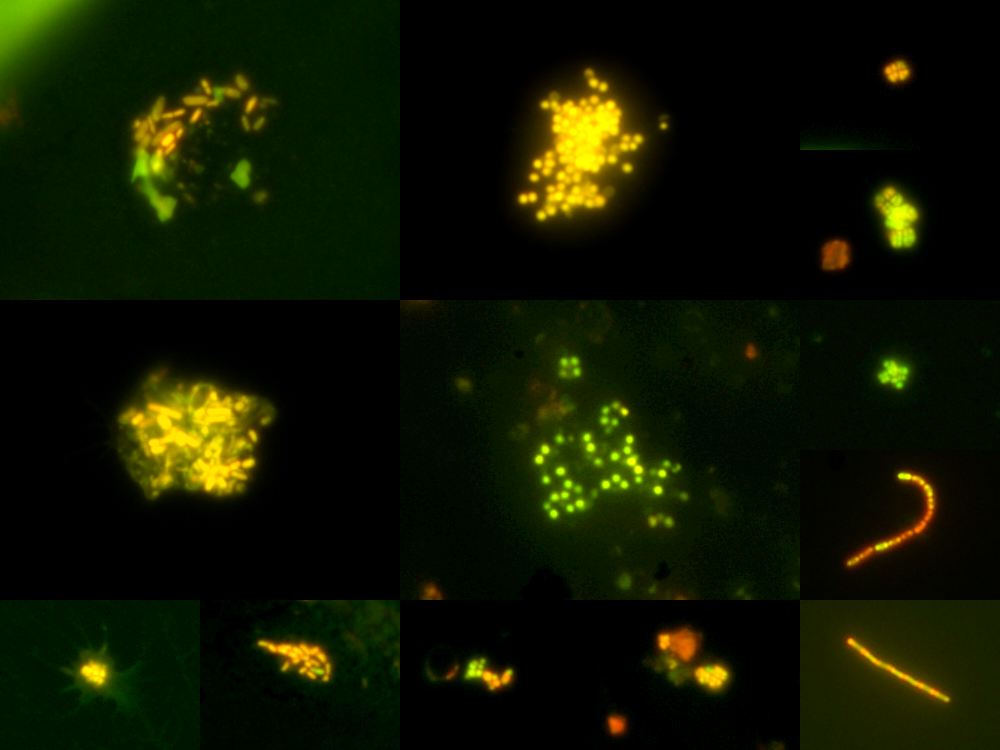
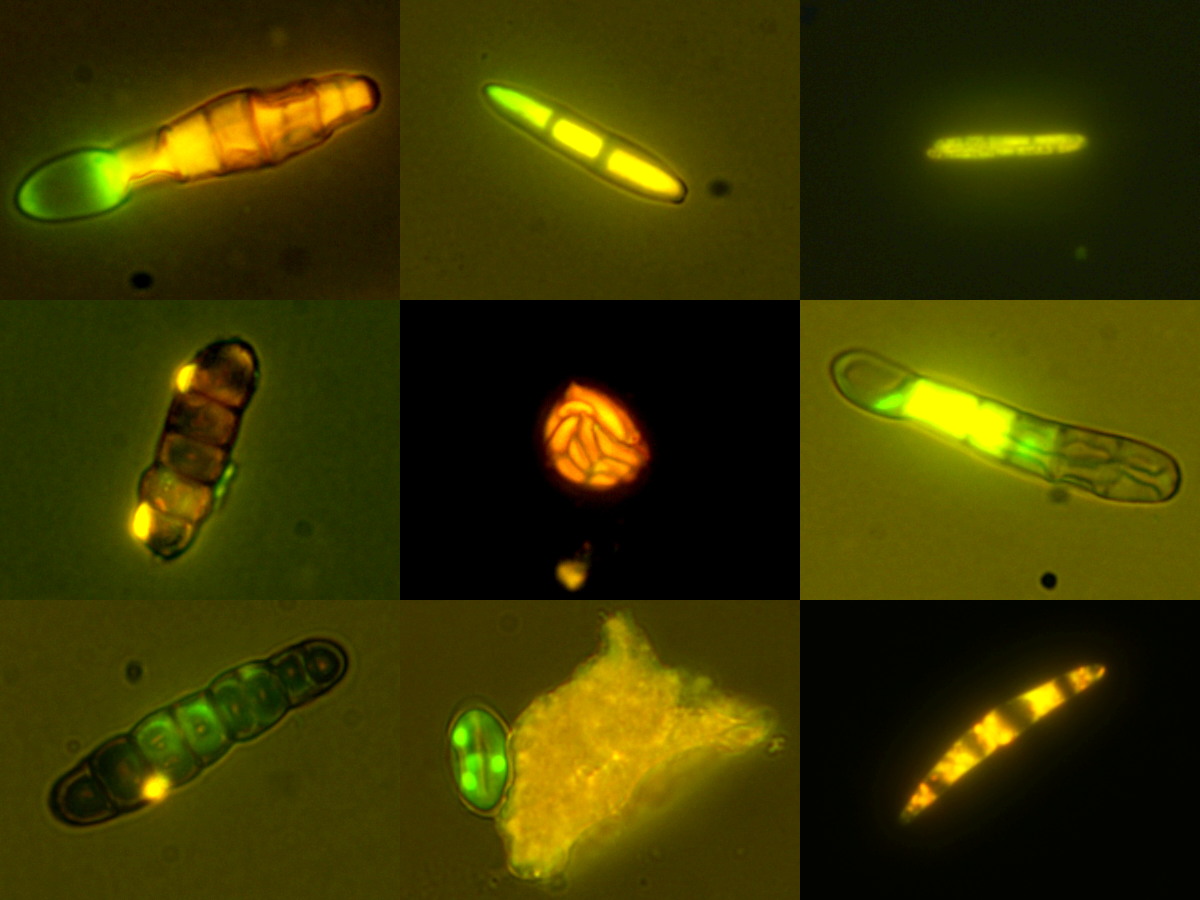
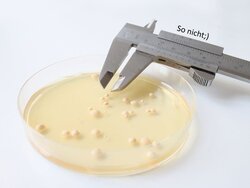
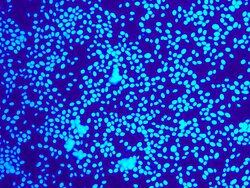
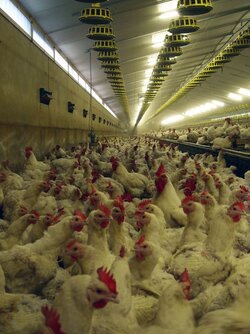
![[Translate to English:] Logo des Bundesministerium für Ernährung und Landwirtschaft](/media/allgemein/logos/BMEL_Logo.svg)